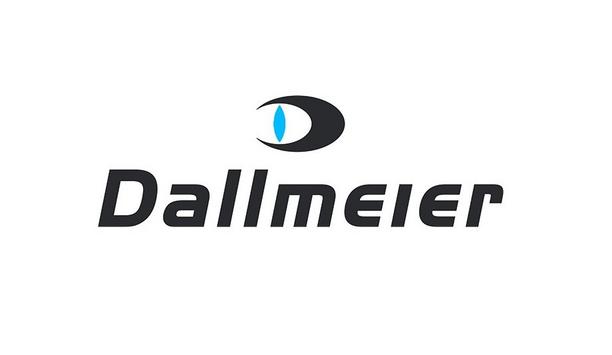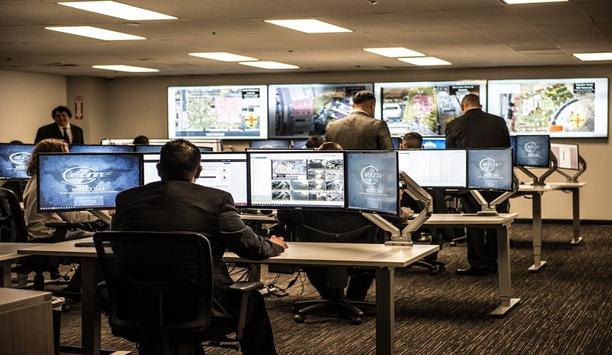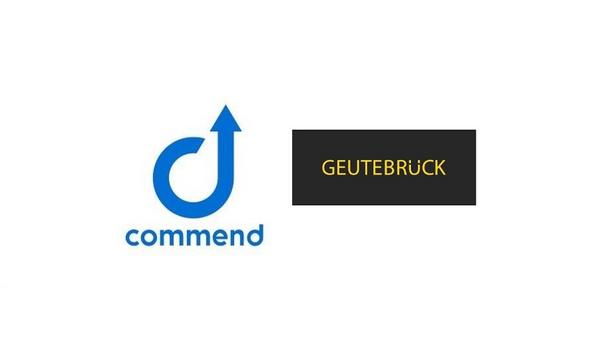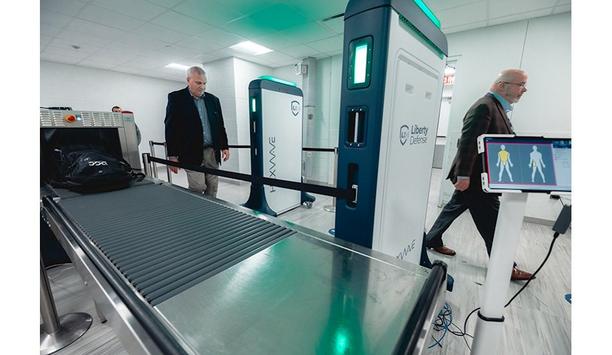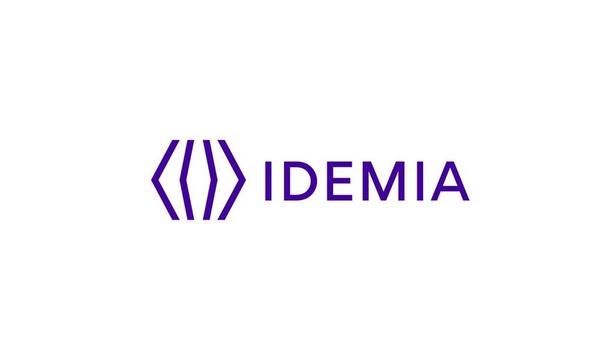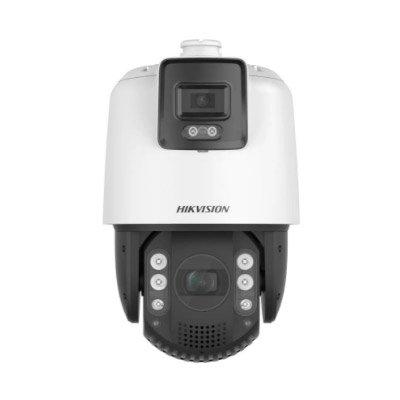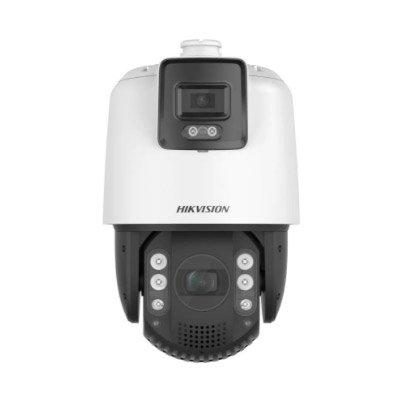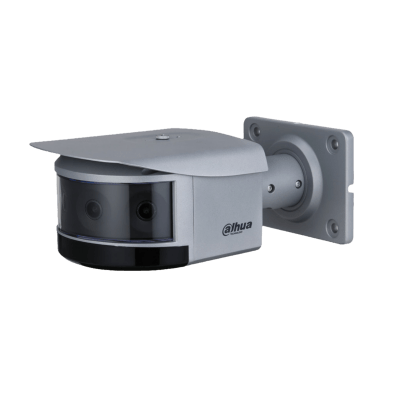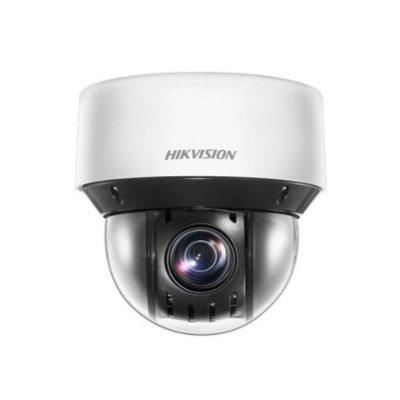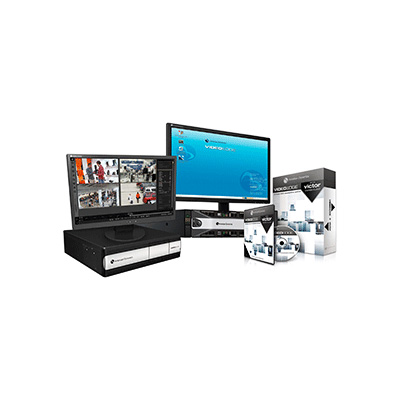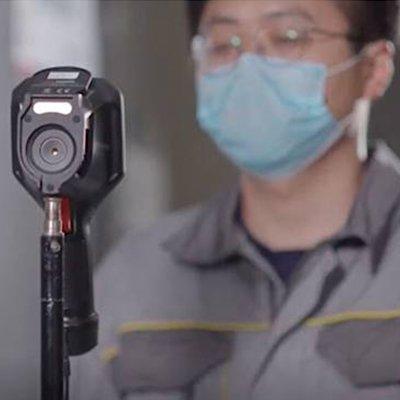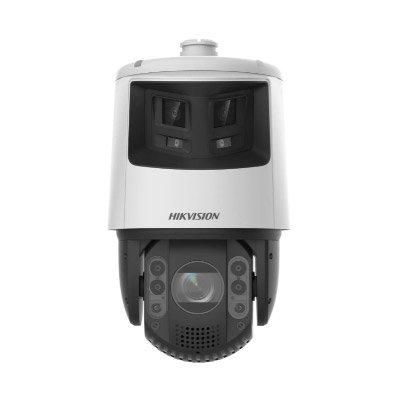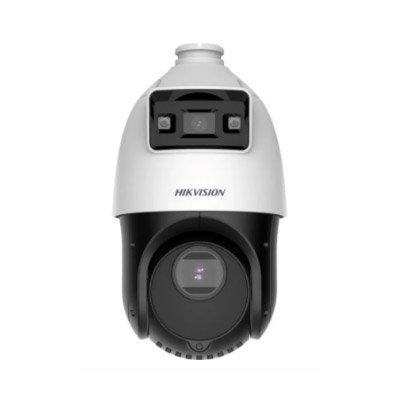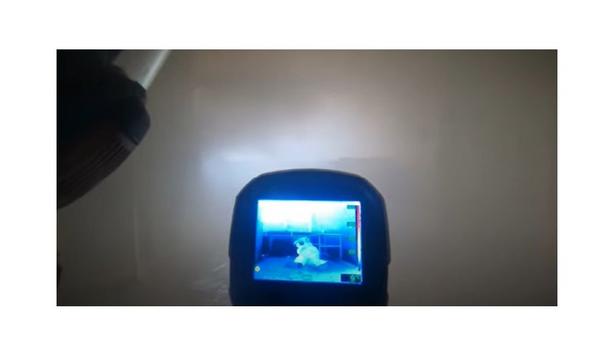Airport security
As the world emerges from the pandemic's shadow five years after it spread globally, everything seems to be back on track. Air travel volumes have matched and even surpassed the pre-COVID level. But are they truly “back”? The pandemic did more than just bring masks and border closures. It fundamentally reshaped the world, accelerating digitalisation beyond recognition and irrevocably redefining security paradigms and human behaviour. Heightened security concerns Standard solutions...
Magenta Security Services, one of the UK’s pioneer security firms, has achieved an exceptional score of 87.5% in its most recent SIA Approved Contractor Scheme (ACS) audit - placing the company firmly within the top 5% of security companies nationwide. With only the top 10% of security firms scoring above 75%, Magenta’s remarkable result reflects the company’s consistent dedication to quality, compliance, and operational excellence across every area of its business. Exceeding...
RecFaces, an international facial recognition software vendor, is excited to announce an upcoming panel discussion on the transformative role of biometric technology in APAC airports. Titled “Smart Airports Start with Smart Tech: Facial Biometrics for APAC Airports,” the online event is to be held on April 30 at 15:00 IST and bring together top industry experts to discuss how AI-driven biometrics is reshaping air travel. Biometrics to streamline journey Industry polls reveal that...
Air Navigation Service Providers (ANSPs) are working their ways to ensure smooth aircraft movements as several of them face what the EUROCONTROL calls ‘structural capacity shortfalls, and less airspace availability for re-routings.’ Globally, aircraft movements is expected to reach 178.1 million by 2042, up from 106.7 million in 2024. In 2042, international passenger traffic will reach the 8.7 billion mark and domestic traffic to 10.6 billion passengers, as per ACI World. Discussi...
Allied Universal® today announced that Taylor Carr has joined its Technology Services business unit as senior vice president of operations. In this role, Carr will oversee operations and drive growth across all revenue segments of the business. Experienced industry leader Carr has more than 25 years of experience in the technology and security industriesCarr has more than 25 years of experience in the technology and security industries. Most recently he served as president for Visi...
Security Central is excited to announce the appointment of Dan Turner as its new Chief Technology Officer (CTO). With over 25 years of experience in the security industry, including a distinguished tenure as Chief Information Officer at Per Mar Security Services, Dan brings a wealth of expertise in information technology, cybersecurity, and business transformation to Security Central. Enhancing innovation in monitoring "Dan’s track record of innovation and his deep industry knowledge ma...
News
The new Dallmeier AI High-Resolution Counting App enables precise counting even with a large number of people and vehicles in the analysis area. AI High-Resolution Counting App The app allows the definition of multiple counting zones, the setting of the counting interval, and the definition of limit values that trigger a message to the client software if they are exceeded or undershot. Typical applications for the Dallmeier AI High-Resolution Counting App are counting people in the airport waiting for areas or vehicles in large car parks. Depending on the camera model, between 500 and 4000 objects can be reliably recorded and classified. Optimised for large numbers of objects The neural network analyses the entire image in an adjustable interval of between 5 and 60 seconds The neural network analyses the entire image in an adjustable interval of between 5 and 60 seconds. When developing the AI High-Resolution Counting neural network, Dallmeier’s experts placed particular emphasis on the object classification of large numbers of objects such as people and vehicles. Multiple counting zones and fill-level visualisation The AI High-Resolution Counting application and associated neural network are compatible with all Domera® SDF6000 and RDF6000 series cameras, as well as all Panomera® models. For small to medium-sized installations, the SeMSy® Compact video management system offers an effective analysis of counting results and recordings. Larger Hemisphere® SeMSy® systems support the reception and processing of messages defined on the camera with the Enterprise Event Processing Module. The People Counting Module allows the creation of multiple counting zones, whose fill levels can be displayed in the colour-coded map view and equipped with individual limit values.
Advantex Network Solutions announces plans to move forward under the sole leadership of Dave O’Connell, co-founder and one of the cornerstones of the business’s success for the past two decades. Founded in 2002 by brothers Dave and Steve O’Connell, Advantex has built a strong reputation as a trusted partner, supporting businesses, manufacturers, education and hospitality providers, and local authorities across the region and beyond. Innovation and customer success The move comes as the Follingsby Park-based company, which is an integrator of IT, communications, and IP security solutions including cybersecurity, data networks, and IP camera and access control systems, has seen sales revenues double in 2024 on the back of work-secured from the manufacturing, hospitality, and education sectors. Projects for SeAH Winds, AESC, Hitachi, Sirius Group, Advance Learning Partnership, and Newcastle International Airport together with a loyal customer base, see the business start the new year poised for further strong growth and a commitment to innovation and customer success through investment in services and industry talent. Tailored and innovative solutions The company plans to build on the 20-plus years of expertise in FY25 and into FY26 Following an impressive 46% growth in team size over the past 18 months, the company plans to build on the 20-plus years of expertise in FY25 and into FY26 with recruitment for a raft of additional engineering, business support, sales, and operations roles. Developing and expanding the business further, Dave O’Connell’s vision and leadership together with the management team, will ensure that Advantex not only upholds its legacy of delivering tailored and innovative solutions but also expands its footprint in the sector. Dave's comment He said, “Throughout our journey, we’ve built Advantex on the foundations of technical excellence and an unwavering commitment to our customers’ success. The significant growth we’ve achieved, particularly over the last 18 months, demonstrates the strength of our business model and the exceptional capabilities of our team." “As we move forward, we’re in a prime position to accelerate our growth plans, with a robust pipeline, strong financial performance, and most importantly, a talented team of 70 professionals who share our vision for innovation and service excellence. Our commitment to expanding our workforce and capabilities reflects our confidence in the opportunities ahead, and I’m excited to lead Advantex into this next chapter of growth.”
Bosch Building Technologies introduces the FLEXIDOME 8100i camera, combining powerful edge-based AI, exceptional image quality, and convenient remote commissioning to address critical use cases. FLEXIDOME 8100i motorised PTRZ Bosch Building Technologies continues its commitment to delivering innovative security solutions with the launch of the FLEXIDOME 8100i motorised pan-tilt-roll-zoom (PTRZ) camera. Building upon the proven FLEXIDOME starlight 8000i series, this next-generation of fixed dome cameras provides system integrators with a powerful tool to address the evolving security needs of airports, government facilities, schools, and other organisations with critical security needs. Improving security and operational efficiency FLEXIDOME 8100i delivers reliable, high-quality video data for informed decision-making The FLEXIDOME 8100i delivers reliable, high-quality video data for informed decision-making, due to edge-based AI video analytics, significantly improving security and operational efficiency across various applications. The uses include detecting personal protective equipment, safeguarding privacy, gathering details about an individual’s physical characteristics for forensic searches, and even recognising potential threats like firearms, among other critical applications. Exceptional image quality The camera excels in daylight and challenging nighttime conditions, providing exceptional image quality. In addition to the camera’s AI and imaging capabilities, features such as smart installation, compliance with government regulations, and data security distinguish it as the ultimate fixed dome camera for mission-critical surveillance needs. Enhance security and efficiency with IVA Pro The camera’s edge-based AI, Intelligent Video Analytics Pro (IVA Pro), provides over 95% accuracy for object detection, classification, and counting, enabling real-time safety and security enhancements with increased efficiency. Pre-installed IVA Pro software licenses for Buildings, Perimeter, and Privacy offer tailored solutions for diverse environments. Building security: Monitor access points, reliably count objects, distinguish people and vehicles, and protect assets. Perimeter security: Detect and deter intrusions with high sensitivity, long-range monitoring. Government buildings, schools, and campuses: Automatically blur faces with a semi-transparent privacy mask without revealing personally identifiable information. Versatility of IVA Pro The camera’s performance can be enhanced further with one of many IVA Pro software licenses. The versatility of IVA Pro enables users to optimise the camera’s functionality and maximise its potential for their security system. Enhance the effectiveness of forensic searches: Quickly retrieve video evidence based on specific attributes, increasing search capabilities’ efficacy and efficiency. (IVA Pro Appearance) Traffic monitoring: Gain valuable insights into traffic flow and patterns. (IVA Pro Traffic) Personal Protective Equipment Detection: Get automatic alerts for missing safety gear to ensure workplace safety and support compliance. (IVA Pro PPE) Early, fast firearm detection and real-time alerts: Enable a swift response to a person brandishing a gun and high-quality video footage for investigations. (IVA Pro Visual Gun Detection) Efficient installation and calibration AI-powered autocalibration for video analytics further optimises efficiency, saving an additional 20% Streamlined installation and remote commissioning reduce setup time by up to 75% compared to traditional cameras. AI-powered autocalibration for video analytics further optimises efficiency, saving an additional 20% of calibration time. Exceptional imaging no matter what Starlight X captures color details in low light, while HDR X records high-quality video regardless of object movement, ensuring exceptional image quality in challenging scenes. Intelligent split IR with individually controllable LEDs provides clear images in complete darkness. Robust and reliable design The new camera is engineered for maximum reliability in challenging environments. It is rated IP66/IP67 and IP6K9K for protection against water and dust, IK11 for vandal resistance, and has enhanced corrosion protection ensuring continuous operation. Prioritising data and cybersecurity Secure Element with TPM 2.0 functionality supports a 4096-bit key length, setting the industry standard Bosch prioritises sensitive information protection, achieving critical cybersecurity certifications including IEC 62443-4-1 and UL 2900-2-3 Level 3. Secure Element with Trusted Platform Module (TPM 2.0) functionality supports a 4096-bit key length, setting the industry standard for future-proof security. Meet government regulations Government needs are constantly evolving. The FLEXIDOME 8100i cameras comply with the US National Defense Authorisation Act (NDAA) 889 for Fiscal Year 2019 and the Trade Agreements Act (TAA). This compliance ensures consistency with reliability standards and adherence to trade regulations. Global markets can look to NDAA and TAA for guidance on trade and procurement standards. However, they must also evaluate their associated rules and priorities. For predictive-ready, data-driven, secure, robust, and resilient systems, Bosch aims to create a world uninterrupted by safety and security concerns.
Gunnebo Entrance Control is set to unveil its latest advancements in airport security at Passenger Terminal Expo 2025, including showcasing advanced entrance control technology from Cominfo, a Gunnebo Entrance Control company. On booth 1314, as a pioneer in entrance control solutions, visitors will be able to see AFL as the latest addition to Gunnebo Entrance Control airport gates portfolio. Highest security standards Gunnebo Entrance Control will present Cominfo’s AirGate e-Gate for automated border control AFL is designed to streamline and secure airport boarding processes while maintaining a seamless passenger journey. This innovation ensures smooth passenger flow while upholding the highest security standards from check-in to boarding. Gunnebo Entrance Control will present Cominfo’s AirGate e-Gate for automated border control, which includes tailgating and crossover detection as well as identifying left luggage. Cominfo’s latest technology Nathan Anstee, VP of Mass Transit for Gunnebo Entrance Control, commented: "As airports continue to evolve, security must adapt to increasing passenger volumes while maintaining a seamless experience. By introducing AFL portfolio and Cominfo’s latest technology, we can showcase how our solutions are designed to meet these challenges, offering intelligent and automated solutions to improve throughput, enhance security and provide greater operational insight." "By leveraging advanced visual detection and space-efficient designs, we are helping airports create bespoke and safer, more efficient environments that align with the demands of modern travel." New standard in airport security solutions Visitors will see the AFL Ultra Compact, a sleek, space-efficient gate designed to seamlessly integrate into airport environments. This solution optimises space utilisation without compromising security, combining advanced technology with user-friendly features to enhance efficiency at every touchpoint. Its compact footprint and comprehensive security measures set a new standard in airport security solutions, balancing effectiveness with convenience. Level of security and operational efficiency Gunnebo Entrance Control will also showcase the AFL Compact with Overhead Detection Gunnebo Entrance Control will also showcase the AFL Compact with Overhead Detection, which builds on the features of the AFL Compact by incorporating an overhead camera. This addition enhances detection capabilities, including single-person verification, tailgating prevention, wrong-way detection, and obstruction alerts, ensuring a higher level of security and operational efficiency. Latest entrance control solutions Nathan concluded: "Passenger Terminal Expo 2025 is a perfect opportunity to engage with industry professionals and explore how we can support airports in enhancing security, improving passenger flow and optimising operations." "We look forward to sharing our latest entrance control solutions and discussing how they can be tailored to meet evolving global airport requirements." Passenger Terminal Expo 2025 Gunnebo Entrance Control invites attendees to visit booth 1314 at Passenger Terminal Expo 2025 to experience these evolving solutions firsthand and discuss tailored project opportunities to meet the specific security and operational needs of individual airport facilities. Passenger Terminal Expo will take place from April 8–10 at IFEMA in Madrid, Spain.
Themed “Airport Operations for Tomorrow”, inter airport Southeast Asia 2025 (IASEA) curated a lineup of conference sessions and the latest innovations to drive conversations on what a sustainable tomorrow looks like for Asia’s airport operations and ground handling industry. From 25-27 March 2025, the 8th edition of IASEA is expected to gather over 4,000 attendees, 150 notable global brands and some 50 industry experts as speakers at the iconic Marina Bay Sands, Singapore. IASEA 2025 Conference–Mastermind keynotes The session will discuss keys that improve operational efficiencies and lay the foundation for resilient Setting the stage for this conference on day 1 (25 March) is the fireside chat titled Reshaping Global Airport Operations by Patrick Ky, CEO, International Centre for Aviation Innovation (ICAI), an industry pioneer with nearly three decades worth of aviation experience. Moderated by Glory Wee, Senior Director, Aviation Development Group, Civil Aviation Authority Singapore (CAAS), the session will discuss solutions that improve operational efficiencies and lay the foundation for resilient and future-proof airports. Next-generation air navigation services “Globally, Asia Pacific takes the lead as the region with 60% of the total number of airport projects, and the region’s carriers handled 31 million international passengers, which was a 19.8% increase in November 2024 compared to November 2023. Recognising the need to address ground and airspace capacity constraints and manpower shortages, while keeping up with increasing passenger footfall in the region, the International Centre for Aviation Innovation was established in Singapore,” said Patrick Ky, CEO, International Centre for Aviation Innovation (ICAI). “ICAI focuses on research and development projects for next-generation air navigation services, automated and smart airports, and unmanned aviation systems and sustainable aviation. At the upcoming IASEA 2025, I’m excited to share insights into new innovations that will be tested in Singapore before being deployed globally.” Skytrax’s World Top Airport List 2024 Keynote sessions led by two of the top 5 airports according to Skytrax’s World Top Airport List 2024 This will be followed by keynote sessions led by two of the top 5 airports according to Skytrax’s World Top Airport List 2024. The first keynote, Airports of The Next Decade & Beyond with Shinichiro Motomiya, General Manager, Narita International Airport Corporation, will provide insights into the master plan of Narita International Airport – a case study of the airport of the future, and Airport in Brief: Incheon Airport with Soonil Hwang, Deputy Director of Fast Travel Team, Incheon International Airport Corporation, will cover a deep dive into the airport’s Digital Transformation Project. New Narita Airport expansion project Shinichiro Motomiya, General Manager, Narita International Airport Corporation, shared, “To ensure that airports can keep up with this surging demand in air traffic today, it’s become paramount for the industry to accelerate conversations on what will make airports sustainable, improve operational resilience and passenger experience. Take the ‘New Narita Airport’ expansion project as a case in point, which we will share about during the keynote session." "The airport development project for the 2030s is looking at consolidating terminals and building a new cargo area to allow for the expected increase of passenger capacity from 57 to 75 million and cargo capacity from 2.4 to 3.5 million tons at Narita International Airport.” Use of Artificial Intelligence technologies Soonil Hwang, Deputy Director of the Fast Travel Team, Incheon International Airport Corporation commented, “We should not shun away from the use of Artificial Intelligence technologies, especially in the aviation industry. At Incheon International Airport, we believe that technology will strike a fine balance between passenger experience and operational efficiency." "Hence, we’ve analysed customer demands and drawn a Persona Journey Map to design solutions around it. As we complete Phase 4 of the transformation of Incheon International Airport, it is my pleasure to share at the upcoming IASEA how we’ve identified values such as ‘Convenient Journey’ or ‘Time’ and utilised them to elevate the customer experience.” Challenges in ground management Minh will cover the solutions needed to address challenges in ground management The morning of the opening day will also see Nguyen Dang Minh, Head of Airport Operations Department, Airports Corporation of Vietnam (ACV) spearhead the next keynote, Vietnam Airport Development Masterplan 2030. Vietnam stands as a pioneer in the aviation landscape, aiming to expand its airport network to 30 airports by 2030 and a long-term vision extending to 2050 that includes upgrades to increase annual passenger capacity by over 80%. As new airports are being built and existing ones upgraded, Minh will cover the solutions needed to address challenges in ground management, security, and resource allocation that will enable airport operations to evolve alongside Vietnam’s expanding aviation network. How transformative technology, greener practices Day 2 of the conference will open with the keynote Global Action Plan for the Prevention of Runway Incursion. With safety as a top priority for the aviation industry, and runway incursions as one of the top five high-risk categories of aviation risks, the session will be led by Mitch Fox, Director, Asia Pacific Centre for Aviation Safety, Flight Safety Foundation, who will cover recommendations from the Global Action Plan for the Prevention of Runway Incursions (GAPRI) that go beyond simple regulatory compliance. Aside from safety, efficiency and sustainability are the next priorities to drive airports of tomorrow. Brad Moore, CEO, APAC, Swissport International AG, will lead the next keynote Redefining Ground Support Excellence in Asia Pacific to examine how transformative technology, greener practices, and strategic innovation are unlocking new opportunities for ground handling – a critical backbone of the aviation system. Aside from these mastermind keynotes, other industry experts and thought pioneers from the airport industry will join the conference, sharing their groundbreaking strategies for transforming terminal and ramp operations to address the challenges of today's demanding and rapidly changing aviation landscape. Some of the conference highlights Using Data Analytics to Optimise Airport Operations Rethinking Passenger Flow: Unravelling the Knot of Terminal Congestion Transforming Baggage Handling: Best Practices for Modern Airports Future-Proofing Airport Security: Balancing Safety, Technology & Passenger Experience Boosting Operational Resilience: Preparing for the Unexpected State-of-the-art solutions at inter airport Southeast Asia 2025 As the reference point for the future of airports, IASEA 2025 will stand as a platform to unveil the latest aviation technologies aimed at streamlining workflows, improving sustainability and elevating operational capabilities. Automation will continue to play a pivotal role in ever-growing passenger expectations. SITA’s 2024 Baggage IT Insights reveal that 80% of airports and 66% of airlines have put touchless self-service baggage handling in place, and more investments will continue in 2025. Award-winning airport management software Aligned with this change, industry expert Smith Detection will introduce to the Asia market the SDX 10060 XDi Aligned with this transformation, industry expert Smith Detection will introduce to the Asia market the SDX 10060 XDi, a ground-breaking X-ray scanner, offering highly accurate material discrimination and substance identification based on an object’s molecular structure. Separately, biometrics and digital identity pioneer NEC will showcase its facial recognition technology, ranked the world’s most accurate in a benchmark test conducted by the U.S. National Institute of Standards and Technology in 2024. ADB Safegate Singapore, who recently clinched awards for Environmental Initiatives, Innovation, Safety, and Business Expansion at the Airport Technology Excellence Awards 2024, will present their award-winning airport management software. Other notable brands to expect on the exhibition floor Aviaco GSE, CIAS, Colibri Energy, Cobus Industries, Datalogic, ewo, FAAC, Fastcharge, FibreFENCE by Fibre Net Spa, FLEX Industries, GRP Iluminacion, Honeywell, ITW GSE, Japan Radio Co., LEONARDO, Mallaghan, Mototok, NEC, OCEM Airfield, Oshkosh AeroTech, Poltrona Frau, Roypow Technology GmbH, SICK AG, ShinMaywa, Thales, TCR, TLD Asia, Toyota Industries Corporation, TREPEL and Weihai Guangtai. All registered professionals for inter airport Southeast Asia 2025 will be granted free access to the exhibition and conference floors. For the latest information on inter airport Southeast Asia, please visit the event website, LinkedIn, or Facebook pages.
Dormakaba has signed an agreement to acquire Montagebedrijf van den Berg B.V. (“Van den Berg”) on 5 February 2025. The acquisition strengthens dormakaba’s airport vertical by adding project and service competencies in the Dutch market. The transaction will be effective from 1 January 2025. Van den Berg Van den Berg is a well-known company specialising in the maintenance, repair, and new installation of automatic door systems and adjacent products with a high exposure to the airport vertical. With its high level of technical expertise in door solution services, the company is the ideal complement to dormakaba’s existing offering in the Dutch market. Founded in 2002, Van den Berg is based in Bunschoten and employs over 20 people. Dutch market expansion Till Reuter, CEO of dormakaba, says, “I am delighted to welcome our new colleagues from Van den Berg to dormakaba. This acquisition not only strengthens our position in the Dutch market and the airport sector but also underscores our commitment to shifting gears to growth.” Dormakaba expects the transaction to be accretive to Group EPS from day 1. The parties have agreed not to disclose the financial details of the transaction.
The new Dallmeier AI High-Resolution Counting App enables precise counting even with a large number of people and vehicles in the analysis area. AI High-Resolution Counting App The app allows the definition of multiple counting zones, the setting of the counting interval, and the definition of limit values that trigger a message to the client software if they are exceeded or undershot. Typical applications for the Dallmeier AI High-Resolution Counting App are counting people in the airport waiting for areas or vehicles in large car parks. Depending on the camera model, between 500 and 4000 objects can be reliably recorded and classified. Optimised for large numbers of objects The neural network analyses the entire image in an adjustable interval of between 5 and 60 seconds The neural network analyses the entire image in an adjustable interval of between 5 and 60 seconds. When developing the AI High-Resolution Counting neural network, Dallmeier’s experts placed particular emphasis on the object classification of large numbers of objects such as people and vehicles. Multiple counting zones and fill-level visualisation The AI High-Resolution Counting application and associated neural network are compatible with all Domera® SDF6000 and RDF6000 series cameras, as well as all Panomera® models. For small to medium-sized installations, the SeMSy® Compact video management system offers an effective analysis of counting results and recordings. Larger Hemisphere® SeMSy® systems support the reception and processing of messages defined on the camera with the Enterprise Event Processing Module. The People Counting Module allows the creation of multiple counting zones, whose fill levels can be displayed in the colour-coded map view and equipped with individual limit values.
Advantex Network Solutions announces plans to move forward under the sole leadership of Dave O’Connell, co-founder and one of the cornerstones of the business’s success for the past two decades. Founded in 2002 by brothers Dave and Steve O’Connell, Advantex has built a strong reputation as a trusted partner, supporting businesses, manufacturers, education and hospitality providers, and local authorities across the region and beyond. Innovation and customer success The move comes as the Follingsby Park-based company, which is an integrator of IT, communications, and IP security solutions including cybersecurity, data networks, and IP camera and access control systems, has seen sales revenues double in 2024 on the back of work-secured from the manufacturing, hospitality, and education sectors. Projects for SeAH Winds, AESC, Hitachi, Sirius Group, Advance Learning Partnership, and Newcastle International Airport together with a loyal customer base, see the business start the new year poised for further strong growth and a commitment to innovation and customer success through investment in services and industry talent. Tailored and innovative solutions The company plans to build on the 20-plus years of expertise in FY25 and into FY26 Following an impressive 46% growth in team size over the past 18 months, the company plans to build on the 20-plus years of expertise in FY25 and into FY26 with recruitment for a raft of additional engineering, business support, sales, and operations roles. Developing and expanding the business further, Dave O’Connell’s vision and leadership together with the management team, will ensure that Advantex not only upholds its legacy of delivering tailored and innovative solutions but also expands its footprint in the sector. Dave's comment He said, “Throughout our journey, we’ve built Advantex on the foundations of technical excellence and an unwavering commitment to our customers’ success. The significant growth we’ve achieved, particularly over the last 18 months, demonstrates the strength of our business model and the exceptional capabilities of our team." “As we move forward, we’re in a prime position to accelerate our growth plans, with a robust pipeline, strong financial performance, and most importantly, a talented team of 70 professionals who share our vision for innovation and service excellence. Our commitment to expanding our workforce and capabilities reflects our confidence in the opportunities ahead, and I’m excited to lead Advantex into this next chapter of growth.”
Bosch Building Technologies introduces the FLEXIDOME 8100i camera, combining powerful edge-based AI, exceptional image quality, and convenient remote commissioning to address critical use cases. FLEXIDOME 8100i motorised PTRZ Bosch Building Technologies continues its commitment to delivering innovative security solutions with the launch of the FLEXIDOME 8100i motorised pan-tilt-roll-zoom (PTRZ) camera. Building upon the proven FLEXIDOME starlight 8000i series, this next-generation of fixed dome cameras provides system integrators with a powerful tool to address the evolving security needs of airports, government facilities, schools, and other organisations with critical security needs. Improving security and operational efficiency FLEXIDOME 8100i delivers reliable, high-quality video data for informed decision-making The FLEXIDOME 8100i delivers reliable, high-quality video data for informed decision-making, due to edge-based AI video analytics, significantly improving security and operational efficiency across various applications. The uses include detecting personal protective equipment, safeguarding privacy, gathering details about an individual’s physical characteristics for forensic searches, and even recognising potential threats like firearms, among other critical applications. Exceptional image quality The camera excels in daylight and challenging nighttime conditions, providing exceptional image quality. In addition to the camera’s AI and imaging capabilities, features such as smart installation, compliance with government regulations, and data security distinguish it as the ultimate fixed dome camera for mission-critical surveillance needs. Enhance security and efficiency with IVA Pro The camera’s edge-based AI, Intelligent Video Analytics Pro (IVA Pro), provides over 95% accuracy for object detection, classification, and counting, enabling real-time safety and security enhancements with increased efficiency. Pre-installed IVA Pro software licenses for Buildings, Perimeter, and Privacy offer tailored solutions for diverse environments. Building security: Monitor access points, reliably count objects, distinguish people and vehicles, and protect assets. Perimeter security: Detect and deter intrusions with high sensitivity, long-range monitoring. Government buildings, schools, and campuses: Automatically blur faces with a semi-transparent privacy mask without revealing personally identifiable information. Versatility of IVA Pro The camera’s performance can be enhanced further with one of many IVA Pro software licenses. The versatility of IVA Pro enables users to optimise the camera’s functionality and maximise its potential for their security system. Enhance the effectiveness of forensic searches: Quickly retrieve video evidence based on specific attributes, increasing search capabilities’ efficacy and efficiency. (IVA Pro Appearance) Traffic monitoring: Gain valuable insights into traffic flow and patterns. (IVA Pro Traffic) Personal Protective Equipment Detection: Get automatic alerts for missing safety gear to ensure workplace safety and support compliance. (IVA Pro PPE) Early, fast firearm detection and real-time alerts: Enable a swift response to a person brandishing a gun and high-quality video footage for investigations. (IVA Pro Visual Gun Detection) Efficient installation and calibration AI-powered autocalibration for video analytics further optimises efficiency, saving an additional 20% Streamlined installation and remote commissioning reduce setup time by up to 75% compared to traditional cameras. AI-powered autocalibration for video analytics further optimises efficiency, saving an additional 20% of calibration time. Exceptional imaging no matter what Starlight X captures color details in low light, while HDR X records high-quality video regardless of object movement, ensuring exceptional image quality in challenging scenes. Intelligent split IR with individually controllable LEDs provides clear images in complete darkness. Robust and reliable design The new camera is engineered for maximum reliability in challenging environments. It is rated IP66/IP67 and IP6K9K for protection against water and dust, IK11 for vandal resistance, and has enhanced corrosion protection ensuring continuous operation. Prioritising data and cybersecurity Secure Element with TPM 2.0 functionality supports a 4096-bit key length, setting the industry standard Bosch prioritises sensitive information protection, achieving critical cybersecurity certifications including IEC 62443-4-1 and UL 2900-2-3 Level 3. Secure Element with Trusted Platform Module (TPM 2.0) functionality supports a 4096-bit key length, setting the industry standard for future-proof security. Meet government regulations Government needs are constantly evolving. The FLEXIDOME 8100i cameras comply with the US National Defense Authorisation Act (NDAA) 889 for Fiscal Year 2019 and the Trade Agreements Act (TAA). This compliance ensures consistency with reliability standards and adherence to trade regulations. Global markets can look to NDAA and TAA for guidance on trade and procurement standards. However, they must also evaluate their associated rules and priorities. For predictive-ready, data-driven, secure, robust, and resilient systems, Bosch aims to create a world uninterrupted by safety and security concerns.
Gunnebo Entrance Control is set to unveil its latest advancements in airport security at Passenger Terminal Expo 2025, including showcasing advanced entrance control technology from Cominfo, a Gunnebo Entrance Control company. On booth 1314, as a pioneer in entrance control solutions, visitors will be able to see AFL as the latest addition to Gunnebo Entrance Control airport gates portfolio. Highest security standards Gunnebo Entrance Control will present Cominfo’s AirGate e-Gate for automated border control AFL is designed to streamline and secure airport boarding processes while maintaining a seamless passenger journey. This innovation ensures smooth passenger flow while upholding the highest security standards from check-in to boarding. Gunnebo Entrance Control will present Cominfo’s AirGate e-Gate for automated border control, which includes tailgating and crossover detection as well as identifying left luggage. Cominfo’s latest technology Nathan Anstee, VP of Mass Transit for Gunnebo Entrance Control, commented: "As airports continue to evolve, security must adapt to increasing passenger volumes while maintaining a seamless experience. By introducing AFL portfolio and Cominfo’s latest technology, we can showcase how our solutions are designed to meet these challenges, offering intelligent and automated solutions to improve throughput, enhance security and provide greater operational insight." "By leveraging advanced visual detection and space-efficient designs, we are helping airports create bespoke and safer, more efficient environments that align with the demands of modern travel." New standard in airport security solutions Visitors will see the AFL Ultra Compact, a sleek, space-efficient gate designed to seamlessly integrate into airport environments. This solution optimises space utilisation without compromising security, combining advanced technology with user-friendly features to enhance efficiency at every touchpoint. Its compact footprint and comprehensive security measures set a new standard in airport security solutions, balancing effectiveness with convenience. Level of security and operational efficiency Gunnebo Entrance Control will also showcase the AFL Compact with Overhead Detection Gunnebo Entrance Control will also showcase the AFL Compact with Overhead Detection, which builds on the features of the AFL Compact by incorporating an overhead camera. This addition enhances detection capabilities, including single-person verification, tailgating prevention, wrong-way detection, and obstruction alerts, ensuring a higher level of security and operational efficiency. Latest entrance control solutions Nathan concluded: "Passenger Terminal Expo 2025 is a perfect opportunity to engage with industry professionals and explore how we can support airports in enhancing security, improving passenger flow and optimising operations." "We look forward to sharing our latest entrance control solutions and discussing how they can be tailored to meet evolving global airport requirements." Passenger Terminal Expo 2025 Gunnebo Entrance Control invites attendees to visit booth 1314 at Passenger Terminal Expo 2025 to experience these evolving solutions firsthand and discuss tailored project opportunities to meet the specific security and operational needs of individual airport facilities. Passenger Terminal Expo will take place from April 8–10 at IFEMA in Madrid, Spain.
Themed “Airport Operations for Tomorrow”, inter airport Southeast Asia 2025 (IASEA) curated a lineup of conference sessions and the latest innovations to drive conversations on what a sustainable tomorrow looks like for Asia’s airport operations and ground handling industry. From 25-27 March 2025, the 8th edition of IASEA is expected to gather over 4,000 attendees, 150 notable global brands and some 50 industry experts as speakers at the iconic Marina Bay Sands, Singapore. IASEA 2025 Conference–Mastermind keynotes The session will discuss keys that improve operational efficiencies and lay the foundation for resilient Setting the stage for this conference on day 1 (25 March) is the fireside chat titled Reshaping Global Airport Operations by Patrick Ky, CEO, International Centre for Aviation Innovation (ICAI), an industry pioneer with nearly three decades worth of aviation experience. Moderated by Glory Wee, Senior Director, Aviation Development Group, Civil Aviation Authority Singapore (CAAS), the session will discuss solutions that improve operational efficiencies and lay the foundation for resilient and future-proof airports. Next-generation air navigation services “Globally, Asia Pacific takes the lead as the region with 60% of the total number of airport projects, and the region’s carriers handled 31 million international passengers, which was a 19.8% increase in November 2024 compared to November 2023. Recognising the need to address ground and airspace capacity constraints and manpower shortages, while keeping up with increasing passenger footfall in the region, the International Centre for Aviation Innovation was established in Singapore,” said Patrick Ky, CEO, International Centre for Aviation Innovation (ICAI). “ICAI focuses on research and development projects for next-generation air navigation services, automated and smart airports, and unmanned aviation systems and sustainable aviation. At the upcoming IASEA 2025, I’m excited to share insights into new innovations that will be tested in Singapore before being deployed globally.” Skytrax’s World Top Airport List 2024 Keynote sessions led by two of the top 5 airports according to Skytrax’s World Top Airport List 2024 This will be followed by keynote sessions led by two of the top 5 airports according to Skytrax’s World Top Airport List 2024. The first keynote, Airports of The Next Decade & Beyond with Shinichiro Motomiya, General Manager, Narita International Airport Corporation, will provide insights into the master plan of Narita International Airport – a case study of the airport of the future, and Airport in Brief: Incheon Airport with Soonil Hwang, Deputy Director of Fast Travel Team, Incheon International Airport Corporation, will cover a deep dive into the airport’s Digital Transformation Project. New Narita Airport expansion project Shinichiro Motomiya, General Manager, Narita International Airport Corporation, shared, “To ensure that airports can keep up with this surging demand in air traffic today, it’s become paramount for the industry to accelerate conversations on what will make airports sustainable, improve operational resilience and passenger experience. Take the ‘New Narita Airport’ expansion project as a case in point, which we will share about during the keynote session." "The airport development project for the 2030s is looking at consolidating terminals and building a new cargo area to allow for the expected increase of passenger capacity from 57 to 75 million and cargo capacity from 2.4 to 3.5 million tons at Narita International Airport.” Use of Artificial Intelligence technologies Soonil Hwang, Deputy Director of the Fast Travel Team, Incheon International Airport Corporation commented, “We should not shun away from the use of Artificial Intelligence technologies, especially in the aviation industry. At Incheon International Airport, we believe that technology will strike a fine balance between passenger experience and operational efficiency." "Hence, we’ve analysed customer demands and drawn a Persona Journey Map to design solutions around it. As we complete Phase 4 of the transformation of Incheon International Airport, it is my pleasure to share at the upcoming IASEA how we’ve identified values such as ‘Convenient Journey’ or ‘Time’ and utilised them to elevate the customer experience.” Challenges in ground management Minh will cover the solutions needed to address challenges in ground management The morning of the opening day will also see Nguyen Dang Minh, Head of Airport Operations Department, Airports Corporation of Vietnam (ACV) spearhead the next keynote, Vietnam Airport Development Masterplan 2030. Vietnam stands as a pioneer in the aviation landscape, aiming to expand its airport network to 30 airports by 2030 and a long-term vision extending to 2050 that includes upgrades to increase annual passenger capacity by over 80%. As new airports are being built and existing ones upgraded, Minh will cover the solutions needed to address challenges in ground management, security, and resource allocation that will enable airport operations to evolve alongside Vietnam’s expanding aviation network. How transformative technology, greener practices Day 2 of the conference will open with the keynote Global Action Plan for the Prevention of Runway Incursion. With safety as a top priority for the aviation industry, and runway incursions as one of the top five high-risk categories of aviation risks, the session will be led by Mitch Fox, Director, Asia Pacific Centre for Aviation Safety, Flight Safety Foundation, who will cover recommendations from the Global Action Plan for the Prevention of Runway Incursions (GAPRI) that go beyond simple regulatory compliance. Aside from safety, efficiency and sustainability are the next priorities to drive airports of tomorrow. Brad Moore, CEO, APAC, Swissport International AG, will lead the next keynote Redefining Ground Support Excellence in Asia Pacific to examine how transformative technology, greener practices, and strategic innovation are unlocking new opportunities for ground handling – a critical backbone of the aviation system. Aside from these mastermind keynotes, other industry experts and thought pioneers from the airport industry will join the conference, sharing their groundbreaking strategies for transforming terminal and ramp operations to address the challenges of today's demanding and rapidly changing aviation landscape. Some of the conference highlights Using Data Analytics to Optimise Airport Operations Rethinking Passenger Flow: Unravelling the Knot of Terminal Congestion Transforming Baggage Handling: Best Practices for Modern Airports Future-Proofing Airport Security: Balancing Safety, Technology & Passenger Experience Boosting Operational Resilience: Preparing for the Unexpected State-of-the-art solutions at inter airport Southeast Asia 2025 As the reference point for the future of airports, IASEA 2025 will stand as a platform to unveil the latest aviation technologies aimed at streamlining workflows, improving sustainability and elevating operational capabilities. Automation will continue to play a pivotal role in ever-growing passenger expectations. SITA’s 2024 Baggage IT Insights reveal that 80% of airports and 66% of airlines have put touchless self-service baggage handling in place, and more investments will continue in 2025. Award-winning airport management software Aligned with this change, industry expert Smith Detection will introduce to the Asia market the SDX 10060 XDi Aligned with this transformation, industry expert Smith Detection will introduce to the Asia market the SDX 10060 XDi, a ground-breaking X-ray scanner, offering highly accurate material discrimination and substance identification based on an object’s molecular structure. Separately, biometrics and digital identity pioneer NEC will showcase its facial recognition technology, ranked the world’s most accurate in a benchmark test conducted by the U.S. National Institute of Standards and Technology in 2024. ADB Safegate Singapore, who recently clinched awards for Environmental Initiatives, Innovation, Safety, and Business Expansion at the Airport Technology Excellence Awards 2024, will present their award-winning airport management software. Other notable brands to expect on the exhibition floor Aviaco GSE, CIAS, Colibri Energy, Cobus Industries, Datalogic, ewo, FAAC, Fastcharge, FibreFENCE by Fibre Net Spa, FLEX Industries, GRP Iluminacion, Honeywell, ITW GSE, Japan Radio Co., LEONARDO, Mallaghan, Mototok, NEC, OCEM Airfield, Oshkosh AeroTech, Poltrona Frau, Roypow Technology GmbH, SICK AG, ShinMaywa, Thales, TCR, TLD Asia, Toyota Industries Corporation, TREPEL and Weihai Guangtai. All registered professionals for inter airport Southeast Asia 2025 will be granted free access to the exhibition and conference floors. For the latest information on inter airport Southeast Asia, please visit the event website, LinkedIn, or Facebook pages.
Dormakaba has signed an agreement to acquire Montagebedrijf van den Berg B.V. (“Van den Berg”) on 5 February 2025. The acquisition strengthens dormakaba’s airport vertical by adding project and service competencies in the Dutch market. The transaction will be effective from 1 January 2025. Van den Berg Van den Berg is a well-known company specialising in the maintenance, repair, and new installation of automatic door systems and adjacent products with a high exposure to the airport vertical. With its high level of technical expertise in door solution services, the company is the ideal complement to dormakaba’s existing offering in the Dutch market. Founded in 2002, Van den Berg is based in Bunschoten and employs over 20 people. Dutch market expansion Till Reuter, CEO of dormakaba, says, “I am delighted to welcome our new colleagues from Van den Berg to dormakaba. This acquisition not only strengthens our position in the Dutch market and the airport sector but also underscores our commitment to shifting gears to growth.” Dormakaba expects the transaction to be accretive to Group EPS from day 1. The parties have agreed not to disclose the financial details of the transaction.


Expert commentary
In today's rapidly evolving security landscape, facial recognition has become a buzzword that often triggers privacy and data protection concerns. However, many security professionals may not realise that "facial recognition" is an umbrella term encompassing various technologies, each with distinct applications and privacy implications. Let's dive into what these technologies really mean for security system resellers, integrators, and end-users. Facial recognition tech At its core, facial recognition technology re-identifies or verifies individuals based on their facial features, which are used as biometrics. However, not all biometric systems are based on unique identifying features. Some analyse general characteristics like facial hair style or other distinctive marks. Such traits, known as soft biometrics, can aid in identification but aren't unique enough to verify someone's identity uniquely. Personally identifiable information Modern systems incorporate robust safeguards, including data encryption and strict retention policies While facial recognition technology has applications ranging from access control to crime prevention to investigation, its implementation varies widely depending on specific needs. Modern systems incorporate robust safeguards, including data encryption and strict retention policies, to ensure the responsible handling of any personally identifiable information (PII). Understanding key technologies and applications Facial recognition encompasses several distinct technologies, each serving specific purposes. Here's a comprehensive breakdown of these technologies and their real-world applications. Key technologies: Face Verification (1:1): A one-to-one comparison where a person claims an identity (e.g., by showing an ID card), and the system verifies whether the face matches the provided identity. Example: In airports, face verification is used for automated passport control. When a traveler approaches a gate, their face is scanned and compared to the photo stored in the government database. If the face matches, the traveler is allowed through the gate without manual checks. Face Identification (1 to many): A one-to-many comparison, where a face captured by a system is compared to a database of multiple faces and facial features to identify the person. This process is often used in security or surveillance contexts. Example: In the case of a missing child at an airport, a system could scan the faces of all passengers passing through checkpoints and compare them to a photo of the child in a database. If a match is found, it triggers an alert. Face Re-identification (Many to Many): Many-to-many comparisons where multiple faces are compared to multiple other faces. This is typically used to track a person’s movement anonymously across different areas by matching their facial images at different checkpoints, without knowing their identity. Example: In a retail environment, facial re-identification might be used to track how long an anonymous person spends moving from one section of a store to another by re-identifying their face as they enter and leave different camera views. Facial recognition can be used both for real-time and offline applications. Real-Time Facial Recognition: Real-time facial recognition refers to the immediate processing of a live video feed, comparing faces to a database to generate instant alerts when a match is found. Example: At large public events like sports stadiums, real-time facial recognition might be used to detect banned individuals (e.g., known hooligans) as they attempt to enter. Post-Event (Recorded) Facial Recognition: This refers to analysing video recordings after the event has occurred, rather than in real-time. Facial recognition is applied to recorded data to identify or track individuals. Example: After a crime, investigators could use facial recognition software on recorded video from security cameras to identify suspects by matching their faces to known databases. These definitions cover various aspects of facial recognition technology, its different applications, and how biometrics are used for identification and tracking purposes. Biometrics: Biometric technologies use a person’s distinguishing physical characteristics, such as their face, fingerprint, or iris, to identify them. Example: Fingerprint or face scanning for unlocking a phone or using iris recognition for secure entry at high-security buildings like data centers. Hard Biometrics: Hard biometrics refer to physical characteristics that are sufficiently unique enough to be used for identifying a specific individual, such as a face, fingerprint, or iris. Example: Using iris recognition at airport security checkpoints to confirm the identity of a traveler. Soft Biometrics: Soft biometrics (personal features) include general attributes like height or body shape, which are not unique enough to identify a person on their own but can help narrow down re-identification when combined with other information. Example: Using height and body shape to help identify a suspect in a camera scene when facial features alone are unreliable. Appearance Similarity: This refers to distinguishing between people based on their appearance (e.g., clothing, accessories) rather than biometric features. It’s often used for accelerated investigation and statistical analysis rather than identification. Example: A retail store may track customers based on the clothes they are wearing to monitor how long they stay in the store, without tracking their faces or personal details. Liveness Detection: A method used to determine whether the subject in front of a facial recognition system is a live human being and not a photo or a video recording. Example: In some mobile payment systems, facial recognition requires users to blink or move their head slightly to ensure they are a live person and not someone trying to use a photo for authentication. Mathematical Representation: Non-reversible mathematical representations are lists of numbers based on a person's facial image or appearance based on clothing. These numbers represent characteristics but cannot be easily used to recreate the face. Example: When an organisation stores only the mathematical representations from a face rather than an actual image, even if the data is stolen, it is nearly impossible to recreate the person’s face or use the data with another system. Privacy and security considerations Modern facial recognition systems prioritise privacy through various protective measures, moving far beyond the basic security protocols of the past. Solutions integrate multiple layers of protection designed to safeguard personal data while maintaining system effectiveness. These sophisticated privacy controls work in concert to ensure responsible data handling and comply with evolving security standards. Key protective measures include: Biometric template isolation that keeps facial recognition templates separate from other personal data, with dedicated secure storage environments. Template encryption frameworks specifically designed for biometric data, using industry-standard protocols that protect facial features during both processing and storage. Biometric data anonymisation that converts facial features into non-reversible mathematical representations – into numbers - prevents the reconstruction of original face images. Cascading deletion protocols automatically remove both raw facial data and derived biometric templates after their authorised use period. Segmented access controls that separate facial recognition administrative functions (like enrollment and template management) from regular system operation. Privacy standards The key is selecting the right tool for each application and ensuring that personal data is collected The security industry continues to evolve, finding innovative ways to balance effective surveillance with privacy protection. By understanding this comprehensive range of technologies, security professionals can better serve their clients with solutions that address specific needs while maintaining appropriate privacy standards. The key is selecting the right tool for each application and ensuring that personal data is collected only when necessary and protected when it is not. Statistical analysis and pattern recognition The variety of facial recognition applications demonstrates that not all systems require storing personal information. Many modern solutions focus on statistical analysis and pattern recognition rather than individual identification, offering powerful security benefits while respecting privacy concerns. This balance of capability and responsibility represents the future of video security technology.
The average business owner or investor has some kind of security precaution in place, especially in the after-hours when there are fewer deterrents to inhibit criminal activity. Security guards, video surveillance systems, motion sensor lights, or even just fake cameras placed around the property are some of the common options people choose. Future of overnight security Smart business owners are starting to realise, however, that some of these traditional security measures are becoming antiquated and no longer cutting. The now and future of overnight security is in remote guarding. Pioneered by companies like Los Angeles-based Elite Interactive Solutions, which was founded back in 2007, remote guarding is revolutionising the overnight security business. Minimising criminal activity Remote guarding is fast becoming the most popular choice among commercial end-user property owners Remote guarding utilises a combination of cutting-edge technology, “digital guards,” highly trained security agents, and local law enforcement if and when necessary to minimise the potential of criminal activity. For those adequately enlightened to its overwhelmingly impressive crime prevention capabilities, remote guarding is fast becoming the most popular choice among commercial end-user property owners to secure and protect their investments. What Is remote guarding? Remote guarding is a revolutionary concept and increasing trend in security systems that utilises a combination of methods to effectively analyse potential threats to property. Cameras and/or other monitoring devices running highly advanced algorithmic software are installed in strategic areas or vulnerable places onsite and remotely located security agents are immediately notified of any activity within a designated perimeter of the property. A blend of AI, cybersecurity, and video analytics When properly deployed by an expert provider, the technology stack includes a proprietary blend of video analytics, artificial intelligence, cybersecurity, and more. Done right, “noise” is effectively filtered out, allowing agents to act on legitimate alerts and achieve zero false alarms communicated to first responders. Today, there are a lot of terms and descriptions tossed around about remote guarding, remote video, virtual guarding, etc., but those attributes must be present to represent the true definition of the offering and its many virtues. Realtime situational awareness Many systems have a two-way speaker that allows the security agent to give a verbal warning When specially trained security agents are alerted to trespassers, possible intruders, or other suspicious activity, they analyse the situation in real-time and determine the necessary level of action. Many systems have a two-way speaker that allows the security agent to give a verbal warning, known as a voice-down, to the individual(s) that they are being watched. Most perpetrators, often believing the response is emanating directly from security personnel on the property itself rather than from a remote command centre, flee immediately. However, if the threat persists, the security agent enlists local law enforcement to get on the scene. Customised remote guarding When properly deployed, remote guarding systems are also customised to specific properties. A team of consultants visits the client’s property to evaluate its vulnerabilities and where to best place cameras and/or other monitoring devices for system efficacy. Traditional security shortfalls According to Keith Bushey, a retired commander for the Los Angeles Police Department, there is much frustration between law enforcement officers and potential victims of crime due to the historically unreliable performance of traditional burglar alarm systems and central monitoring stations. He states about 90% of security-related calls are false alarms, a problem that has been well-documented through the years. Onsite challenges When a legitimate emergency does occur, the perpetrators have often already done their damage When a legitimate emergency does occur, the perpetrators have often already done their damage and/or escaped by the time law enforcement arrives. Onsite security guards are not the remedy either as they bring their own set of issues and challenges. Unexpected costs Traditional security systems can also have unexpected costs. The cost is not only in the security guards’ paycheck or the cost of the equipment itself. The cost comes when an actual incident occurs. In worst-case scenarios, the security guard(s) are injured, the business suffers inventory loss, and/or damage is sustained to the property. The medical and other costs for the security guard(s), the loss of inventory, property damage, deployment of law enforcement resources, and possible fallout of legal expenses all add up. Even in the best-case scenario, false alarm expenses incur if law enforcement is dispatched. These, among many others, are some of the primary issues that remote guarding resoundingly answers as a superior alternative. A bounty of benefits Remote guarding systems have been proven to cut costs and be more effective than traditional security systems. Even though the monthly monitoring costs of remote guarding are significantly higher than traditional intrusion detection system monitoring, the much higher effectiveness in crime reduction, elimination of false alarms, and augmenting or replacement of manned guards result in a substantially higher return on investment (ROI) to the end user. Easy tracking of threats The security cameras already have their image captured on record, making them easier to track down For example, case studies have demonstrated reduced security costs for clients by 60%, on average. These reductions have come from the costs of security staff, inventory, or property loss, plus saving money on insurance premiums and deductibles. The nature of remote guarding reduces the risk and costs of false alarms, with professional security agents able to determine an actual threat before law enforcement is called. In a rare instance when a perpetrator escapes before law enforcement arrives or can detain the individual(s), the security cameras already have their image captured on record, making them easier to track down and identify. Reduction of false alarms The significant reduction in false alarms is greatly appreciated by law enforcement, as it allows them to focus on real emergencies or crises. Better relationships are also developed between clients and law enforcement, as remote guarding systems are highly reliable in providing accurate and real-time information to officers as they approach the scene. In short, it assists law enforcement in doing their job more effectively, as well as more safely thanks to having eyewitness information before engaging in an active crime scene. Partnership When you combine the decreased cost with the increased efficiency and success rate, it is easy to see why many commercial end-user property owners across the country are making the shift to remote guarding. It’s also an outstanding opportunity for professional security dealers and integrators to partner with a remote guarding services provider to bring a superior solution to their end customers and pick up a recurring monthly revenue stream in the process.
It’s no secret that the data security sector is constantly changing. It has an annual CGR of about 12.3%. Future trends in data security Much of this has to do with the rise of cybercrime in recent years, with reports showing that cyberattacks happen as often as every 39 seconds. To combat the growing rate of cybercrime, data security has been on the rise. As we journey further into this era, it becomes evident that a spectrum of significant trends is molding the future of data security. This exploration delves into a selection of these trends, unraveling their importance and the potential implications they carry 1. AI security tools will increase Artificial Intelligence is also being used in the development of smart attacks and malware The introduction of Artificial Intelligence in the data security industry brought significant changes, especially in cybersecurity. AI has been the golden standard for face detection, natural language processing, automated threat detection, and automated security systems. Additionally, Artificial Intelligence is also being used in the development of smart attacks and malware, bypassing even the latest security protocols in data control. And as time progresses, AI security tools will flourish and dominate the scene. Let’s take a more in-depth look at three of the top AI security tools. Targeted attack analysis tool Manufacturers utilise targeted attack analysis tools to uncover targeted and stealthy attacks. Artificial Intelligence can be applied to the program’s capabilities, processes, and knowledge. For instance, Symantec launched this tool to combat the Dragon 2.0 attack in 2022. The phishing attack reprimanded multiple energy companies while trying to gain access to their operational networks. Targeted Attack Analysis Tools can analyse incidents and look for similarities from previous situations. They also help detect suspicious activities and collect all the necessary data to determine whether a specific action is malicious. Intercept X tool Results from the Intercept X Tool feature high accuracy and a low false positive rate Sophos, a British security hardware and software company, launched the Intercept X Tool. It engages a neural network that records and analyses data like a human brain. Sophos’ Intercept X Tool can extract features from a single file and perform a deep analysis. It detects malicious activities within 20 milliseconds. Plus, it’s also trained to work on bi-directional sharing and real-world feedback of threat intelligence. Results from the Intercept X Tool feature high accuracy and a low false positive rate. IBM Watson Technology IBM’s QRadar Advisor uses IBM Watson Technology, a unique AI tool for fighting cyber attacks. Artificial Intelligence can auto-investigate activities and indicators for potential exploitation or compromise. With cognitive reasoning, IBM Watson Technology can present critical insights to accelerate the response cycle. Security analysts can utilise this technology to search for threat incidents, reducing the risk of letting them fly under the radar. 2. Blockchain as a security solution It guarantees no points of failure or hackable entrances that can expose datasets inside the system Blockchain is a type of distributed ledger technology (DLT) that aims to establish trust within an untrusting ecosystem. Today it’s one of the most robust cybersecurity technologies in the industry. Blockchain utilises a decentralised ledger system, but your team members can still gain access to transparent information in the cloud. Members can also record, pass along, and view necessary transactional data in the blockchain. The entire blockchain process maintains data integrity within the system while establishing trust among team members. It guarantees no points of failure or hackable entrances that can expose datasets inside the system. Cybersecurity, biometrics Cybersecurity primarily benefits from these features because blockchain can create a secure and robust wall between data and hackers. On top of that, blockchain ledgers can include biometrics like fingerprints and retina scans. These prevent hackers from accessing any private data. Because blockchain is decentralised, it also limits hackable data. Together with the technology’s record-keeping system, each node is provided insight into data manipulation exposing real-time cybercrime attempts. 3. Increased and widened access control Without access control, expect your company to be open to security issues, including theft, data loss, and breach of data Access control is critical in data security. More than a valuable security tool, business leaders can use access control to regulate people accessing any given resource. A company with an IT security setting can control who has the liberty to edit certain files. One of the primary goals of access control is to minimise threats or attacks to organisations and businesses to keep people and data secure. Without access control, expect your company to be open to security issues, including theft, data loss, and breach of data protection laws. Benefits The benefits of increased and widened access control include: Identifying who can access and control your data at specific time intervals. Protecting data from overwriting, accidental deletion, and malicious intent. User permissions that can be readily changed. Compliance and regulation with data privacy laws. Central management of access to data through a reporting portal or a dashboard. Multi-factor authentication Access control comes in various types and systems, so it’s critical to know the features of what you’re looking for. The most common type is multi-factor authentication or MFA. It involves multiple steps before logging in, requiring the user to enter other relevant information besides the password. Some other examples of information include biometrics, answering a security question, or entering a code sent to the user’s email address. Two-factor authentication, role-based access control Two-factor authentication further prevents unauthorised entries that can result in unnecessary data possession Two-factor authentication further prevents unauthorised entries that can result in unnecessary data possession. Another type of access control is role-based access control. In this setup, only one individual can set up access guidelines and grant permissions to specific team members within an organisation. 4. Greater use of the zero-trust security model The zero-trust security model is a framework that requires every user within and outside the organisation to undergo authentication, authorisation, and validation. These are all essential to ensure proper security configuration before access is granted to the company’s applications and data. A zero-trust model assumes that anyone can cause data breaches and that a traditional network edge is not taken into effect. Moreover, it addresses the following modern-day challenges: Hybrid cloud environments. Security of remote workers. Ransomware threats. This framework utilises the combination of multiple advanced technologies, including: A risk-based multi-factor authentication. Endpoint security. Identity protection. Cloud workload technology. The zero-trust model uses all these innovative tools for system identification, user verification, access consideration, and system security maintenance. Constant validation and monitoring Enforcing strict policies and compliance with data privacy laws are also essential Additionally, it also considers data encryption, email security, and asset verification before establishing connections with applications. The architecture of a zero-trust framework requires constant validation and monitoring of the users and the devices they are using. Enforcing strict policies and compliance with data privacy laws are also essential. More importantly, the zero trust architecture requires all organisations to be aware of all their available services and accounts to gain complete control of data handling and manipulation. 5. Increased privacy regulations Privacy regulations and policies guide organisations in proper data control, handling, and security. These policies guide organisations in proper data control, handling, and security. As a responsible business owner, you must comply with these regulations to avoid legal issues. With cybersecurity attacks becoming common, expect increased and stricter privacy regulations to be released in the next few years. While current policies are still taken into effect, various modifications and adjustments will occur to compete with the rising numbers of data breaches, thefts, data loss, and more. California Privacy Rights Act (CPRA) Currently, the California Privacy Rights Act (CPRA) is the most comprehensive legislation on state data privacy. It only started to take effect on January 1, 2023. The CPRA introduces the following principles: Broad individual consumer rights. Significant duties of people who need to collect sensitive and personal information. Additional definitions of data privacy and security. An individual’s duties include releasing information about data collection to concerned data subjects and proper access, correction, and deletion of information. Final thoughts 2023 is a big year for data security. Trends such as increased adoption of zero-trust policies, a greater reliance on AI security tools, and the implementation of blockchain as a security solution are all things we expect to see shortly. Staying up-to-date with these trends is important for keeping your business current and ensuring that you’re adhering to new and changing regulations. Doing so can give you an edge over the competition and keep you out of legal hot water.
Security beat
Companies at GSX 2023 emphasised new ways that technologies such as artificial intelligence (AI) and the cloud can address long-standing issues in the security market. Among the exhibitors at the event in Dallas were companies seeking creative ways to apply technology, lower costs, and make the world a safer place. Reflecting on the exhibition, here are some additional takeaways. Expanding AI at the edge i-PRO is a company reflecting the continued expansion of edge AI capability in the security market. Today, more than half of the company’s lineup supports AI at the edge so the customer has a wide choice of form factors when seeking to leverage the feature set. AI processing relay, extended warranty i-PRO is increasing their warranty period from 5 to 7 years, which could be a lifetime warranty in some cases I-PRO also has an “AI processing relay” device that accepts non-AI video streams and applies edge analytics. AI has progressed from a high-end technology to a feature available in a variety of cameras at different price points. i-PRO is also increasing its warranty period from 5 to 7 years, which could be a lifetime warranty in some cases depending on a customer’s refresh schedule and lifecycle management. Active Guard, MonitorCast The company’s video management system (Video Insight) is continuing to build new features including “Active Guard,” an integrated metadata sorter. Their access control platform, MonitorCast, is a Mercury-based solution that is tightly integrated with Video Insight. Their embedded recorders now have PoE built in. “We can move at a faster pace to fill out our product line since leaving Panasonic,” says Adam Lowenstein, Director of Product Management. “We can focus our business on adapting to the market.” Emphasis on retail and other verticals Shoplifting is a timely issue, and retail is a vertical market that got a lot of attention at GSX 2023. “We see a lot of retailers who are primarily interested in protecting employee safety, but also assets,” says Brandon Davito, Verkada’s SVP of Product and Operations. “Shrinkage is a CEO-level priority.” “Retailers are getting more engaged with security posture, instead of letting perpetrators walk,” Davito adds. Intrusion detection Verkada has an intrusion product that will notify a central station if there is an alarm On the alarm side, Verkada has an intrusion product that will notify a central station if there is an alarm, and operators can review videos to confirm the alarm. Other capabilities seeking to discourage trespassers include sirens, strobes, and “talkdown” capabilities. International expansion Verkada continues to expand internationally with 16 offices in all, including Sydney, Tokyo, and London. The core value proposition is to enable customers to manage their onsite infrastructure more simply, including new elements such as PTZ cameras, intercoms, and visitor management. Verkada emphasises ease of use, including a mobile application to allow access to be managed across the user base. Forging partnerships “We are committed to the channel and industry, and we continue to build relationships and expand our reach,” says Davito. Among the industry relationships is a new partnership with Convergint, which was hinted at during the show and announced later the same day. They are also expanding their partnerships with Schlage, Allegion, and ASSA ABLOY. Working with other verticals They offer new features for K -12 schools, and a new alarm platform is easier to deploy and manage Verkada has also found success across multiple other verticals, notably healthcare, where they integrate with an electronic medical records system. They offer new features for K-12 schools, and a new alarm platform is easier to deploy and manage. They are integrating wireless locks to secure interior doors in schools, looking to secure the perimeter, and installing guest management systems. Transitioning the mid-market to the cloud Salient is squarely focused on the “mid-market,” a large swath of systems somewhere between small businesses and enterprise-level systems. Pure cloud systems are not as attractive to this market, which has a built-out infrastructure of on-premise systems. Adding a camera to an existing system is easier and less expensive than tying it to the cloud. Benefits of cloud It’s a market that may not be ready for the pure cloud, but there are benefits to be realised from adding a cloud element to existing systems. “We are continuing to augment our premise-based solutions with added cloud capabilities and flexibility,” says Sanjay Challa, Salient’s Chief Product Officer. The feedback Salient hears from their customers is “I want to own my data.” The hybrid cloud approach offers the right mix of control, flexibility, and unit economics. Cloud add-on capabilities We want to provide the flexibility for customers to go full-cloud as it becomes more economically attractive" Cloud add-on capabilities include bringing more intelligence about system operation to the user via the cloud. Over time, Salient expects to sell more cloud-centric offerings based on feedback from integrators and customers. “We want to provide the flexibility for customers to go full-cloud as it becomes more economically attractive over time,” says Challa. Vaidio AI technology Salient seeks to be a transition pioneer to help customers realise the path to the cloud. Their approach is “crawl, walk, run,” and helping customers make the transition at each stage. Salient has added AI to its product offering, incorporating Vaidio AI technology from IronYun into a powerful suite and broad array of on-premise analytics, which are gaining traction. The seamless approach makes it easy for customers to embrace AI analytics, although Salient remains broadly committed to open systems. Addressing ‘soft’ features for integrators AMAG is in the process of enhancing its product line with the next generation of access control panels. However, “product” is just part of the new developments at AMAG. In addition to “hard” features (such as products), the company is looking to improve its “soft” features, too; that is, how they work with the integrator channel. Integrator channel Rebuilding a process to make your organisation more efficient, is relatively easy; it just takes a lot of persistence" “We have the depth of our legacy customer base we can learn from, we just need to close the feedback loop quicker,” says Kyle Gordon, AMAG’s Executive Vice President of Global Sales, Marketing, and commercial Excellence, who acknowledges the value of reinstating face-to-face meetings after COVID. “We are laser-focused on nurturing our integrator channel,” he says. “Developing new features takes time, but rebuilding a process to make your organisation more efficient, that’s relatively easy; it just takes a lot of persistence,” says Gordon. More cohesive internal communication is another useful tool, he says. Disrupting the cloud based on price Wasabi is working to make cloud applications less expensive by offering a “disruptive” price on cloud storage, $6.99 per terabyte per month (80% less than hyperscalers). Contending “hyperscalers” like AWS are charging too much for cloud storage, Wasabi is using its own intellectual property and server equipment co-located in data centres around the world. Wasabi sells “hot cloud storage,” which refers to the fact that they only have one tier of storage and data is always accessible. In contrast, a company such as AWS might charge an “egress fee” for access to data stored in a “colder” tier. Cloud storage “We saw that several video surveillance companies had not yet adopted cloud storage, and we saw an opportunity to make it easy to use,” said Drew Schlussel, Wasabi’s Senior Director of Product Marketing. “We just install a little bit of software that allows them to store data in the cloud and bring it back from the cloud.” Performance, protection (cybersecurity), and price Wasabi works with integrators, resellers, and distributors and also integrates with VMS companies Wasabi works with integrators, resellers, and distributors and also integrates with VMS companies such as Genetec and Milestone. Emphasising performance, protection (cybersecurity), and price, their data centres are certified to SOC 2 and ISO 27001 standards. Faster throughput for weapons detection Xtract One is a young company focusing on weapons detection in a time of accelerated concern about gun issues post-COVID. Founded in Canada and based on technology developed at McMaster University, Xtract One has found a niche in providing weapons detection at stadiums and arenas. These customers already have budgets, and it is easy to shift the money to a newer, faster technology. Madison Square Garden in New York City is among its customers. Cost savings solution Xtract One can increase throughput to 30 to 50 people per entrance per minute (compared to 5 to 6 people per minute when using metal detectors). The solution doesn’t require anyone to empty their pockets and the system alarms on items beyond guns and knives. Using Xtract One allows customers to reduce the number of screening lanes and security staff, providing additional cost savings, all while getting fans through the screening process in half the time. Purpose-built sensors The system uses purpose-built sensors looking for specific characteristics, such as reflective and density properties In addition to stadiums and arenas, Xtract One, formerly Patriot One, is also getting “inbound” interest from schools, hospitals, manufacturers, and other verticals that makeup 50% of their business. “We’re on a rocket ride, mainly because the weapons issues are not going away,” says Peter Evans, CEO and Director at Xtract One. The system uses purpose-built sensors looking for specific characteristics, such as reflective and density properties, all correlated by an AI engine. Providing early warning of violence ZeroEyes is another company focused on weapons detection. Their AI gun detection system works with video images to identify if someone is “brandishing” (carrying) a weapon. In other words, the system does not detect concealed weapons. Identifying someone carrying a weapon provides early warning of a possible violent act. Increased response with AI-enables images Images are identified by AI and sent to a monitoring centre where a human confirms the image before contacting first responders. Knowing the location of a shooter enables staff to lock entry points, move people to safety, and direct first responders. The company was founded to leverage existing camera views to stop mass shootings and gun violence by reducing response times.
Audio-video technologies have historically been a silo in the enterprise, separated from the larger network infrastructure by their use of analogue, hard-wired and proprietary connections. Software-defined system However, AV devices such as video walls and corporate signage add more value to security and emergency response operations when they are connected to the larger IT network and can interface seamlessly with other systems. That’s the approach provided by Userful, which offers a software-defined system for end-to-end control of audio-video applications in an enterprise, using a web browser and standard industry protocols. The use of software avoids the need for proprietary hardware and the compatibility challenges of multiple hardware systems operating in silos. It also yields visibility and control throughout the system. Single software system The single software system grants IT, administrators, the ability to govern multiple platforms The single software system grants IT, administrators, the ability to govern multiple platforms, while providing individual departments access to the specific applications they need. The emphasis is on meeting stakeholders’ functional requirements using a system governed by the IT department. The data travels across the IT network infrastructure without being blocked by the use of proprietary hardware and cabling, for example. Digital transformation Avoiding the analogue (hardwired) approach enables enterprises to “digitally transform” the operation of their audio-video devices. The approach is especially useful at the intersection of security and digital signage. “We give the power back to the local IT administrators, who can govern the system and enable customers to govern their applications,” says Shane Vega, VP of Product Marketing at Userful. The company’s software aggregates video information and distributes it as needed to individual video displays. Real-time event monitoring The software enables various video devices to become a seamless part of the IT infrastructure. It also facilitates sharing of information throughout the enterprise, even in an emergency. In contrast, proprietary, siloed systems hamper the free flow of information when it is needed the most. For example, if there is an emergency or active shooter situation, video devices throughout an organisation can be leveraged to inform occupants about the details of the event in real-time and to provide actionable instructions specific to an occupant’s location in the building. Visual communications When security is integrated into a larger platform, it can spread the message visually throughout the enterprise Visual communications, such as digital signage, comprise a powerful extension of a security system that actively monitors threats, and offers the ability to communicate to a large group of people. When security is integrated into a larger platform, it can spread the message visually throughout the enterprise. Strategic messaging can guide building occupants to their best course of action during an emergency, whether it is to flee or to shelter in place. Situational awareness The software-driven IT system can aggregate information from multiple sources, such as video camera feeds or information from an access control system, and display it on a large video wall, for example. Free-flowing information promotes situational awareness in a control room, and enables immediate response, whether it’s to call the fire department, sound an alarm, or initiate a mass exodus of building occupants. IT software approach “It makes everyone strategically aware and sends the appropriate messaging to those who need it, rather than to everyone at once,” says Vega. Facilitating more effective operations centers is the “tip of the spear” of what Userful offers customers, he adds. The IT software approach simplifies video wall applications, which are becoming increasingly complex, by enabling content to be scaled, chopped, and aggregated to fit the demands of a display wall. An analytic might trigger the system to enlarge a camera view on the full screen, to send video to the police, or “take over” screens throughout a building to provide strategic messaging. Third-party integrations Designing video walls more strategically in an operations centre can help operators interpret information quickly Designing video walls more strategically in an operations centre can help operators avoid fatigue and interpret information quickly and efficiently. “Userful’s role in the display world is to make sure software can distribute the information despite the hardware,” said Vega. Userful works with third-party integration to add system functionality and automate responses. Software flexibility “We’re a platform that pulls in sources of information, maybe it’s a hundred cameras, and then we manage the entire solution,” says Vega. “We enable users to take data from multiple sources and send it to a wide range of displays, creating a repository of information.” “When you have a software-defined platform, you can extend the solution using the flexibility of the software into a system that cannot be achieved with hardware,” says Vega. “If people want to scale their system to multiple locations, we can add a source remotely.” Proactive responses to security “Security is an important market for everyone, paramount for any organisation,” says Vega. “Individuals are responsible for the safety and security of constituents and require a proactive, not reactive response.” “We can provide proactive responses because of the nature of AV-over-IP, which is interoperability. It can draw attention to threats and proactively communicate response plans.” Managed service provider The “software-defined” approach can help systems integrators position themselves as a managed service provider Getting away from siloed solutions should be a priority for any IT purchase by an organisation, says Vega. “We need to train end-users to take a holistic view and not to look at it from a siloed perspective. A fuller understanding helps them gain efficiencies.” The “software-defined” approach can help systems integrators position themselves as a managed service provider rather than just “selling boxes.” “Think about how you can partner with end-users over the long term,” advises Vega. Information-based automation “Think of technology as a holistic part of the business for better outcomes across the whole business. More information is better information, and integrators can help customers create automation that will provide more awareness.” The Userful proposition offers especially good value in transportation markets, such as ports and airports; and in campus environments, such as enterprise, higher education, and airports. In any scenario where there are a lot of screens, the system can distribute corporate and emergency messaging, whether on a baggage claim screen or a way-finder screen.
Travel volumes at airports have been increasing of late, although still below the 2.5 million or so passengers the Transportation Security Administration (TSA) screened every day, on average, before the pandemic. As passengers return, they will notice the airport security experience has changed during the pandemic – and many of the changes are likely to continue even longer. Need for touchless technology The lowest U.S. air travel volume in history was recorded last April, with approximately 87,500 passengers. As passenger traffic plummeted, the aviation community sought to explore the potential of new technologies to make security checkpoints more contactless and flexible when the traffic numbers return. The pandemic has seen an increase in touchless technology deployed in the screening area. Used for cabin baggage screening, Computed Tomography (CT) produces high-quality, 3-D images to enable a more thorough analysis of a bag’s contents. Imaging Technology Millimeter-wave body scanners began replacing metal detectors globally as a primary screening method Enhanced Advanced Imaging Technology (eAIT), which uses non-ionising radio-frequency energy in the millimeter spectrum, safely screens passengers without physical contact for threats such as weapons and explosives, which may be hidden under a passenger’s clothing. Millimeter-wave body scanners began replacing metal detectors globally as a primary screening method. AI algorithms Other innovations include an automatic screening lane, centralised image processing, and artificial intelligence (AI). Looking ahead, AI algorithms have the ability to clear most passengers and bags automatically, making the process smoother and freeing up staff to focus only on alarms. The pandemic’s need for contactless screening may accelerate the adoption of AI. CAT machine Credential Authentication Technology (CAT) machines automatically verify identification documents presented by passengers during the screening process. The TSA continues to accept expired Driver’s Licenses and state-issued IDs for up to a year after expiration, based on the premise that license renewals may be delayed and/or more difficult during the pandemic. The REAL ID enforcement deadline was extended to Oct. 1, 2021. Health precautions Checkpoint health precautions have been a part of the airport screening experience since early in the pandemic. Last summer, the TSA announced the “Stay Healthy. Stay Secure” campaign, which included requirements such as social distancing among travelers, ID verification without physical contact, plastic shielding installed at various locations, and increased cleaning and disinfecting. In January 2021, President Biden signed an Executive Order requiring travellers to wear face masks when in airports and other transportation facilities (to remain in effect until May 11). Checkpoint screening Clear is a privately owned company that provides expedited security that uses biometrics either a person’s eyes or face to speed along the process of getting people through checkpoints. TSA officers wear masks and gloves at checkpoints and may also wear eye protection or clear plastic face shields. The limits on allowable liquids a passenger may take on board were broadened to include a hand sanitiser container of up to 12 ounces, one per passenger in a carry-on bag. A paradigm shift Just as aviation security changed after 9/11, the COVID-19 crisis is expected to lead to a paradigm shift to create a safer and more secure environment. Measures were implemented so that passengers, staff and other stakeholders could have continued assurance and confidence in airports amid and after the pandemic.
Case studies
Geutebrück video security provides comprehensive protection for professional users, from perimeter security to process documentation. The open platform for video management G-Core offers a variety of interfaces to third-party systems and is the basis for integrated security systems. The latest integration with Commend's communication solutions supports efficient communication and security for users from various verticals such as banking, industrial production, police and corrections authorities, health care, education, road and air traffic, parking facilities, and hotels. Direct voice contact By linking Geutebrück's G-Core Video Management System and Commend's communication servers, information, and commands can be exchanged effortlessly between the systems. For example, users of a Commend intercom station can call up video images from specific cameras at the click of a mouse, assess the situation, and then make direct voice contact with the other party, e.g. to respond immediately to emergency calls. Advanced analysis The integration creates a safer working environment and minimises training times and operating errors This integration not only offers greater transparency but also simplifies the users' daily as they do not have to switch between different platforms. This creates a safer working environment and minimises training times and operating errors. The integration also offers advanced analysis options, such as the automatic detection of suspicious activities using AI algorithms and the creation of detailed security reports. Flexibility and scalability The flexibility and scalability of the combined solution allow the security system to be adapted to changing requirements and simplify the integration of additional components. Overall, the integration provides an improved security infrastructure that significantly increases the efficiency, security, and user-friendliness of monitoring and communication systems.
Genetec Inc., a pioneering technology provider of unified security, public safety, operations, and business intelligence solutions, announced that Heathrow Airport’s multi-year investment in Genetec solutions is enabling them to continuously innovate and transform operations. The joint effort provides Heathrow with a unified view across large-scale airport operations to secure people and assets, bringing efficiency and enhancing the passenger experience while ensuring data privacy and cybersecurity compliance. Deployed Genetec Security Centre Heathrow deployed Genetec Security Centre to bring all of its IP security systems onto one unified forum London Heathrow is Europe’s busiest airport, handling approximately 80 million passengers and 14 million tons of goods annually. Over 76,000 employees work around the clock to ensure the airport’s smooth operations across its 1,227-hectare site, including maintaining passenger flow, securing the premises, and managing over 1,300 daily take-offs and landings for 89 different airlines. Heathrow initially deployed Genetec Security Centre to bring all of its IP security systems onto one unified platform. What began as a 2,000-camera deployment in 2016 has since more than quadrupled in size, incorporating everything from video and access control to LIDAR, analytics, automatic licence plate recognition (ALPR), and more. Genetec solutions Genetec solutions are used to go far beyond security. For example, Genetec solutions are used to monitor over 150 km (93 miles) of baggage belts and facilitate the daily entry and exit of over 150,000 vehicles. “We’re essentially running a small city operation that happens to be called Heathrow,” explains Danny Long, IT Product Owner for physical security products at Heathrow. “Alongside the traditional airport security functions, we’re responsible for the monitoring of roads, retail space, three train stations, a bus terminal, offices, a church, fuel stores, a high voltage electrical network, and all the other associated infrastructure that maintains passenger flow.” Software and firmware updates Genetec Security Centre supports 90 other stakeholder groups working across 110 control rooms Genetec Security Centre now supports 90 different stakeholder groups working across 110 distinct control rooms, all of whom have different needs and access rights. Customised dashboards enable individual teams and third parties, such as police, government agencies, airlines, and retailers, to focus on their specific tasks. For example, some operational staff are given the tools to monitor passenger flow and are automatically notified when security lines grow too long. Meanwhile, colleagues in IT don’t see camera feeds. Instead, they have access to system health dashboards that notify them of devices that have fallen offline or require software/firmware updates. New requirements “The joy of working with London Heathrow is that the team is constantly striving to put our system through its paces and identify new areas where it can add value,” states Simon Barnes, Director of Business Development, Genetec, Inc. “While our software is configured to their requirements at the time, once in the field, new requirements emerge, and we have to adjust to their reality." “My job is to translate business requirements into workable solutions and Genetec provides me with the valuable tools to achieve that,” concludes Long. “Our experience with Genetec has been very positive. We’re only looking to expand in terms of the size and usage of the system.”
Liberty Defense Holdings Ltd., a pioneering provider of next-generation, Artificial Intelligence (AI) based technologies for the detection of concealed weapons and other threats, is pleased to announce that its HEXWAVE™ system has been purchased by a major international airport in New York to support its aviation worker security screening program. “We are thrilled to have received the award following a public tender and to be chosen to support the airport's aviation worker screening requirements,” said Bill Frain, CEO of Liberty Defense. “The flexibility and comprehensive detection capability that HEXWAVE offers are driving widespread interest in the system from across the aviation sector. It is highly portable and can be rapidly deployed both indoors and outdoors to seamlessly facilitate screening in various areas of the airport." Physical screening procedures In April 2023, the Transportation Security Administration (TSA) issued an Airport Security Program National Amendment, which will require U.S. airports to adopt physical screening procedures for employees with access to secure-side areas. HEXWAVE enables rapid, automated, high-throughput screening using a contactless, walkthrough portal that can detect a diverse range of threats well beyond what enhanced metal detectors on the market can detect. It uses millimetre wave, advanced 3D imaging, and AI to detect all types of concealed threats, including both metal and non-metal items, liquids, powders, plastic explosives, 3D-printed ghost guns, and other novel threats or prohibited items – without the passenger having to divest common items like keys, wallets, or phones.
Managing access to and around Helsinki Airport is a complex task. Around 15,000 people work there daily pre-pandemic passenger numbers hovered around 60,000 to 70,000. Challenges faced Only authorised people should have access to many areas at an airport. The management of movement — by passengers, staff, and contractors— is critical to Finavia’s mission to deliver an efficient service. They sought new access solutions to help. Finavia staff and customer safety is paramount. In addition, every new access control device must: Facilitate the move to keyless security at the airport, which aims to enhance user convenience. Offer compatibility so Finavia can secure all types of openings, from doors and cabinets to fences and cargo. Integrate seamlessly with the existing access control system and software used at Helsinki Airport. Meet essential requirements for securing such a sensitive site: safety, functionality, durability and usability. Solution With Aperio H100 battery-powered handles, all types of airport doors are connected Partnering with ASSA ABLOY gave Finavia a vast choice of solutions to meet its complex security needs. With Aperio H100 battery-powered handles, all types of airport doors are connected to their access control system. This Aperio solution with inbuilt RFID capability was easy to install without the cabling that traditional devices require. “We see in real-time who will open the lock and when, and we can modify and grant access rights, remotely,” explains Kari Mäkinen. Programmable, secure ID cards Authorised building users come and go with programmable, secure ID cards. It’s much more convenient than a mechanical key, “The access cards of both Finavia personnel and staff of other companies are easily programmed with necessary access rights,” he adds. “When employees change, their access is disabled. Or if the card gets lost, it can be completely removed from the system. With mechanical keys, that process is much harder.” Durability, security of supply, and usability Multiple compatible ASSA ABLOY solutions are deployed alongside wireless Aperio and CLIQ door devices. Keyless, mobile-operated padlocks secure fencing and cargo. An antimicrobial coating on door handles helps to prevent germ spread and reassures staff. The availability of all these solutions from a single manufacturer helped Finavia to create a unified, integrated system at Helsinki Airport. “Safety, functionality, durability, security of supply, and usability were the reasons we chose the ASSA ABLOY solution,” said Kari Mäkinen, Senior Access Control Specialist at Helsinki Airport.
EQUANS helped Avalon Airport in Melbourne’s west become Victoria’s second international airport with a new $40 million terminal catering for customs and security requirements of international flights, retail and duty-free space – a total of 10,000 m2 floor space. Air Asia required use of the new international airport terminal by December 2018. EQUANS were engaged in July to perform the electrical, communication, security and public address (PA) systems for the new terminal. The works had to be ready for the date of commencement of operations – a project timeline of 5 months. Within this short build time, EQUANS needed to deliver complete installation to the highest international security and efficiency standards. The Solution – EQUANS’ full turnkey package EQUANS delivered a full turnkey package for the construction of the new international airport terminal EQUANS delivered a full turnkey package for the construction of the new international airport terminal, including connection of a new substation, underground mains, lighting and power reticulation, a custom cable support system, a complex communications network including physical segregation for Home Affairs and Internal Communications, security and access control, PA and hearing augmentation. The project consisted of the installation of multi-coloured high-level cable trays, 415- and 240-volt cabling, sub mains, and switchboards. State-of-the-art security and communications networks The communications and security teams installed the highly specified state-of-the-art security and communications networks, which included high security metal enclosures and conduits. 3,800 metres of cable tray were laid, along with 30,000 metres of power cable, 1,500 metres of in-slab hearing loops and 350 metres of optic fibre cable. EQUANS mobilised multiple teams of expert technicians and compliance experts, ensuring that the project was completed to exacting standard in less than 20 weeks. The on-site teams and project managers worked tirelessly to keep the construction program on track and to ensure efficiency in delivery without any compromise to safety. The Benefit Thanks to EQUANS' experience managing large construction projects Thanks to EQUANS' experience managing large construction projects, this exciting project was delivered on time and within budget. EQUANS were able to leverage off their extensive network of suppliers and sub-contractors to ensure buying power was maximised. A team of over 35 employees worked closely together with JJA Consulting Group, Avalon, Linfox and Qanstruct to a very tight construction program to deliver this project. Avalon's brand new complex Air Asia is now flying from Avalon using the brand new complex, boasting state-of-the-art customs facilities and a simple, efficient international terminal experience. Overview Key facts: BICSI Excellence Awards Winner, NECA Excellence Awards Finalist Constructions of electrical, communication, security and public address (PA) systems Fast turnaround time of only 5 months
IDEMIA Public Security North America, the premium provider of convenient and trusted biometric-based solutions, has announced the launch of the Iowa mobile ID to Samsung Wallet, in collaboration with the Iowa Department of Transportation (Iowa DOT) and Samsung. Iowa residents can now securely store their mobile ID in their Samsung Wallet and start using it to easily assert their identity from their mobile phone at TSA checkpoints at the Des Moines and Eastern Iowa airports, as well as 25 other participating airports in the country and other participating businesses. Free Iowa Mobile ID app Iowans can easily access their mobile ID in the Samsung Wallet by simply tapping their phone The launch of Iowa mobile ID in the Samsung Wallet brings elevated convenience and security for Iowans with Samsung smartphones for airport security screening, age-restricted products, and other identity checks. Iowans can easily access their mobile ID in the Samsung Wallet by simply tapping their phone near the mobile ID reader or having the mobile ID reader scan the QR code. Iowans can also continue to access their mobile ID through the free Iowa Mobile ID app, which IDEMIA built and rolled out for Iowa in October 2023. "We are pleased to add the Iowa mobile ID in the Samsung Wallet to the list of acceptable IDs at our security checkpoints. Travellers who want to take advantage of this new capability will find that their Iowa mobile ID is a convenient option when going through the security process. TSA will continue to embrace technology that improves security effectiveness while streamlining the passenger experience at airports," John Bright, TSA Iowa Federal Security Director. Partnership with Samsung "We are proud to expand our partnership with Samsung and the Iowa Department of Transportation (Iowa DOT) to bring mobile driver’s licences and state IDs to Samsung Wallet in Iowa and help accelerate the adoption of mobile ID in the state." Mobile IDs are authenticated and issued by state DMVs or MVDs" "As a convenient and highly secure way to store state-issued IDs and drivers licenses, mobile IDs are authenticated and issued by state DMVs or MVDs and ensure personal information is securely stored on the user’s device, with only the user having control over what personal information is shared," Donnie Scott, CEO of IDEMIA Public Security North America. Long-standing partnership As a pioneer in identity solutions and credentials issuance with a long-standing partnership with government agencies and a commitment to privacy by design, end-to-end security and interoperability, the Iowa DOT partnered with IDEMIA to launch mobile ID in Iowa in October 2023. Later that year, in December 2023, Samsung collaborated with IDEMIA, alongside the Arizona Department of Transportation Motor Vehicle Division (AZ MVD), to roll out mobile ID to the Samsung Wallet in Arizona.
Geutebrück video security provides comprehensive protection for professional users, from perimeter security to process documentation. The open platform for video management G-Core offers a variety of interfaces to third-party systems and is the basis for integrated security systems. The latest integration with Commend's communication solutions supports efficient communication and security for users from various verticals such as banking, industrial production, police and corrections authorities, health care, education, road and air traffic, parking facilities, and hotels. Direct voice contact By linking Geutebrück's G-Core Video Management System and Commend's communication servers, information, and commands can be exchanged effortlessly between the systems. For example, users of a Commend intercom station can call up video images from specific cameras at the click of a mouse, assess the situation, and then make direct voice contact with the other party, e.g. to respond immediately to emergency calls. Advanced analysis The integration creates a safer working environment and minimises training times and operating errors This integration not only offers greater transparency but also simplifies the users' daily as they do not have to switch between different platforms. This creates a safer working environment and minimises training times and operating errors. The integration also offers advanced analysis options, such as the automatic detection of suspicious activities using AI algorithms and the creation of detailed security reports. Flexibility and scalability The flexibility and scalability of the combined solution allow the security system to be adapted to changing requirements and simplify the integration of additional components. Overall, the integration provides an improved security infrastructure that significantly increases the efficiency, security, and user-friendliness of monitoring and communication systems.
Genetec Inc., a pioneering technology provider of unified security, public safety, operations, and business intelligence solutions, announced that Heathrow Airport’s multi-year investment in Genetec solutions is enabling them to continuously innovate and transform operations. The joint effort provides Heathrow with a unified view across large-scale airport operations to secure people and assets, bringing efficiency and enhancing the passenger experience while ensuring data privacy and cybersecurity compliance. Deployed Genetec Security Centre Heathrow deployed Genetec Security Centre to bring all of its IP security systems onto one unified forum London Heathrow is Europe’s busiest airport, handling approximately 80 million passengers and 14 million tons of goods annually. Over 76,000 employees work around the clock to ensure the airport’s smooth operations across its 1,227-hectare site, including maintaining passenger flow, securing the premises, and managing over 1,300 daily take-offs and landings for 89 different airlines. Heathrow initially deployed Genetec Security Centre to bring all of its IP security systems onto one unified platform. What began as a 2,000-camera deployment in 2016 has since more than quadrupled in size, incorporating everything from video and access control to LIDAR, analytics, automatic licence plate recognition (ALPR), and more. Genetec solutions Genetec solutions are used to go far beyond security. For example, Genetec solutions are used to monitor over 150 km (93 miles) of baggage belts and facilitate the daily entry and exit of over 150,000 vehicles. “We’re essentially running a small city operation that happens to be called Heathrow,” explains Danny Long, IT Product Owner for physical security products at Heathrow. “Alongside the traditional airport security functions, we’re responsible for the monitoring of roads, retail space, three train stations, a bus terminal, offices, a church, fuel stores, a high voltage electrical network, and all the other associated infrastructure that maintains passenger flow.” Software and firmware updates Genetec Security Centre supports 90 other stakeholder groups working across 110 control rooms Genetec Security Centre now supports 90 different stakeholder groups working across 110 distinct control rooms, all of whom have different needs and access rights. Customised dashboards enable individual teams and third parties, such as police, government agencies, airlines, and retailers, to focus on their specific tasks. For example, some operational staff are given the tools to monitor passenger flow and are automatically notified when security lines grow too long. Meanwhile, colleagues in IT don’t see camera feeds. Instead, they have access to system health dashboards that notify them of devices that have fallen offline or require software/firmware updates. New requirements “The joy of working with London Heathrow is that the team is constantly striving to put our system through its paces and identify new areas where it can add value,” states Simon Barnes, Director of Business Development, Genetec, Inc. “While our software is configured to their requirements at the time, once in the field, new requirements emerge, and we have to adjust to their reality." “My job is to translate business requirements into workable solutions and Genetec provides me with the valuable tools to achieve that,” concludes Long. “Our experience with Genetec has been very positive. We’re only looking to expand in terms of the size and usage of the system.”
Liberty Defense Holdings Ltd., a pioneering provider of next-generation, Artificial Intelligence (AI) based technologies for the detection of concealed weapons and other threats, is pleased to announce that its HEXWAVE™ system has been purchased by a major international airport in New York to support its aviation worker security screening program. “We are thrilled to have received the award following a public tender and to be chosen to support the airport's aviation worker screening requirements,” said Bill Frain, CEO of Liberty Defense. “The flexibility and comprehensive detection capability that HEXWAVE offers are driving widespread interest in the system from across the aviation sector. It is highly portable and can be rapidly deployed both indoors and outdoors to seamlessly facilitate screening in various areas of the airport." Physical screening procedures In April 2023, the Transportation Security Administration (TSA) issued an Airport Security Program National Amendment, which will require U.S. airports to adopt physical screening procedures for employees with access to secure-side areas. HEXWAVE enables rapid, automated, high-throughput screening using a contactless, walkthrough portal that can detect a diverse range of threats well beyond what enhanced metal detectors on the market can detect. It uses millimetre wave, advanced 3D imaging, and AI to detect all types of concealed threats, including both metal and non-metal items, liquids, powders, plastic explosives, 3D-printed ghost guns, and other novel threats or prohibited items – without the passenger having to divest common items like keys, wallets, or phones.
Managing access to and around Helsinki Airport is a complex task. Around 15,000 people work there daily pre-pandemic passenger numbers hovered around 60,000 to 70,000. Challenges faced Only authorised people should have access to many areas at an airport. The management of movement — by passengers, staff, and contractors— is critical to Finavia’s mission to deliver an efficient service. They sought new access solutions to help. Finavia staff and customer safety is paramount. In addition, every new access control device must: Facilitate the move to keyless security at the airport, which aims to enhance user convenience. Offer compatibility so Finavia can secure all types of openings, from doors and cabinets to fences and cargo. Integrate seamlessly with the existing access control system and software used at Helsinki Airport. Meet essential requirements for securing such a sensitive site: safety, functionality, durability and usability. Solution With Aperio H100 battery-powered handles, all types of airport doors are connected Partnering with ASSA ABLOY gave Finavia a vast choice of solutions to meet its complex security needs. With Aperio H100 battery-powered handles, all types of airport doors are connected to their access control system. This Aperio solution with inbuilt RFID capability was easy to install without the cabling that traditional devices require. “We see in real-time who will open the lock and when, and we can modify and grant access rights, remotely,” explains Kari Mäkinen. Programmable, secure ID cards Authorised building users come and go with programmable, secure ID cards. It’s much more convenient than a mechanical key, “The access cards of both Finavia personnel and staff of other companies are easily programmed with necessary access rights,” he adds. “When employees change, their access is disabled. Or if the card gets lost, it can be completely removed from the system. With mechanical keys, that process is much harder.” Durability, security of supply, and usability Multiple compatible ASSA ABLOY solutions are deployed alongside wireless Aperio and CLIQ door devices. Keyless, mobile-operated padlocks secure fencing and cargo. An antimicrobial coating on door handles helps to prevent germ spread and reassures staff. The availability of all these solutions from a single manufacturer helped Finavia to create a unified, integrated system at Helsinki Airport. “Safety, functionality, durability, security of supply, and usability were the reasons we chose the ASSA ABLOY solution,” said Kari Mäkinen, Senior Access Control Specialist at Helsinki Airport.
EQUANS helped Avalon Airport in Melbourne’s west become Victoria’s second international airport with a new $40 million terminal catering for customs and security requirements of international flights, retail and duty-free space – a total of 10,000 m2 floor space. Air Asia required use of the new international airport terminal by December 2018. EQUANS were engaged in July to perform the electrical, communication, security and public address (PA) systems for the new terminal. The works had to be ready for the date of commencement of operations – a project timeline of 5 months. Within this short build time, EQUANS needed to deliver complete installation to the highest international security and efficiency standards. The Solution – EQUANS’ full turnkey package EQUANS delivered a full turnkey package for the construction of the new international airport terminal EQUANS delivered a full turnkey package for the construction of the new international airport terminal, including connection of a new substation, underground mains, lighting and power reticulation, a custom cable support system, a complex communications network including physical segregation for Home Affairs and Internal Communications, security and access control, PA and hearing augmentation. The project consisted of the installation of multi-coloured high-level cable trays, 415- and 240-volt cabling, sub mains, and switchboards. State-of-the-art security and communications networks The communications and security teams installed the highly specified state-of-the-art security and communications networks, which included high security metal enclosures and conduits. 3,800 metres of cable tray were laid, along with 30,000 metres of power cable, 1,500 metres of in-slab hearing loops and 350 metres of optic fibre cable. EQUANS mobilised multiple teams of expert technicians and compliance experts, ensuring that the project was completed to exacting standard in less than 20 weeks. The on-site teams and project managers worked tirelessly to keep the construction program on track and to ensure efficiency in delivery without any compromise to safety. The Benefit Thanks to EQUANS' experience managing large construction projects Thanks to EQUANS' experience managing large construction projects, this exciting project was delivered on time and within budget. EQUANS were able to leverage off their extensive network of suppliers and sub-contractors to ensure buying power was maximised. A team of over 35 employees worked closely together with JJA Consulting Group, Avalon, Linfox and Qanstruct to a very tight construction program to deliver this project. Avalon's brand new complex Air Asia is now flying from Avalon using the brand new complex, boasting state-of-the-art customs facilities and a simple, efficient international terminal experience. Overview Key facts: BICSI Excellence Awards Winner, NECA Excellence Awards Finalist Constructions of electrical, communication, security and public address (PA) systems Fast turnaround time of only 5 months
IDEMIA Public Security North America, the premium provider of convenient and trusted biometric-based solutions, has announced the launch of the Iowa mobile ID to Samsung Wallet, in collaboration with the Iowa Department of Transportation (Iowa DOT) and Samsung. Iowa residents can now securely store their mobile ID in their Samsung Wallet and start using it to easily assert their identity from their mobile phone at TSA checkpoints at the Des Moines and Eastern Iowa airports, as well as 25 other participating airports in the country and other participating businesses. Free Iowa Mobile ID app Iowans can easily access their mobile ID in the Samsung Wallet by simply tapping their phone The launch of Iowa mobile ID in the Samsung Wallet brings elevated convenience and security for Iowans with Samsung smartphones for airport security screening, age-restricted products, and other identity checks. Iowans can easily access their mobile ID in the Samsung Wallet by simply tapping their phone near the mobile ID reader or having the mobile ID reader scan the QR code. Iowans can also continue to access their mobile ID through the free Iowa Mobile ID app, which IDEMIA built and rolled out for Iowa in October 2023. "We are pleased to add the Iowa mobile ID in the Samsung Wallet to the list of acceptable IDs at our security checkpoints. Travellers who want to take advantage of this new capability will find that their Iowa mobile ID is a convenient option when going through the security process. TSA will continue to embrace technology that improves security effectiveness while streamlining the passenger experience at airports," John Bright, TSA Iowa Federal Security Director. Partnership with Samsung "We are proud to expand our partnership with Samsung and the Iowa Department of Transportation (Iowa DOT) to bring mobile driver’s licences and state IDs to Samsung Wallet in Iowa and help accelerate the adoption of mobile ID in the state." Mobile IDs are authenticated and issued by state DMVs or MVDs" "As a convenient and highly secure way to store state-issued IDs and drivers licenses, mobile IDs are authenticated and issued by state DMVs or MVDs and ensure personal information is securely stored on the user’s device, with only the user having control over what personal information is shared," Donnie Scott, CEO of IDEMIA Public Security North America. Long-standing partnership As a pioneer in identity solutions and credentials issuance with a long-standing partnership with government agencies and a commitment to privacy by design, end-to-end security and interoperability, the Iowa DOT partnered with IDEMIA to launch mobile ID in Iowa in October 2023. Later that year, in December 2023, Samsung collaborated with IDEMIA, alongside the Arizona Department of Transportation Motor Vehicle Division (AZ MVD), to roll out mobile ID to the Samsung Wallet in Arizona.


Round table discussion
Headlines of violence in our schools are a reminder of the need to keep educational institutions safe. In fact, if there is a positive aspect to the constant bombardment of headlines, it is that it keeps our attention perpetually focused on how to improve school security. But what is the role of physical security systems? As the new school year begins, we asked this week’s Expert Panel Roundtable: Are schools safer because of physical security systems? Why or why not?
As physical security technologies become more complex, it is incumbent on the dealer/integrator to have the skills and expertise needed to ensure that a system operates smoothly. The value of integrators increasingly rests on the skill sets they bring to bear when installing a system. If the skills are missing, there is a problem. We asked this week’s Expert Panel Roundtable: What missing skills among security integrators can cause problems for customers?
Driving the smart homes market is the convenience of simple technology solutions. Almost every home now has a “smart speaker” that makes it easier than ever for homeowners to interface and control their technology. But where does security fit into the new landscape of smart home systems? We asked this week’s Expert Panel Roundtable: What’s new in smart homes and residential security systems?
Products


White papers

Ensuring cybersecurity of video
Download
RFID and smartphone readers in physical access control
Download
Access control & intelligent vehicle screening
Download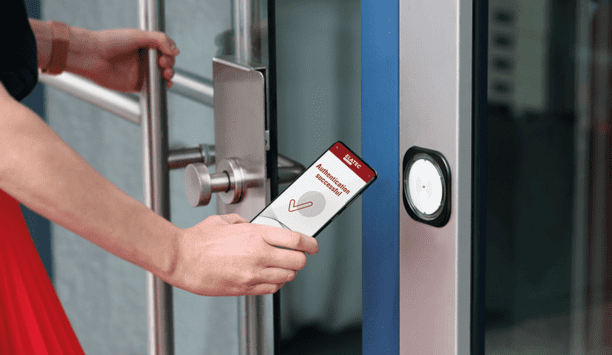
Physical access control
Download
Precision and intelligence: LiDAR's role in modern security ecosystems
Download
How security systems ensure healthy workplaces during COVID and after
Download
Ensuring cybersecurity of video
Download
RFID and smartphone readers in physical access control
Download
Access control & intelligent vehicle screening
Download
Physical access control
Download
Precision and intelligence: LiDAR's role in modern security ecosystems
Download
How security systems ensure healthy workplaces during COVID and after
Download

Airport security: Manufacturers & Suppliers

Using artificial intelligence (AI) to automate physical security systems
Download
A modern guide to data loss prevention
Download
7 proven solutions for law enforcement key control and asset management
Download
The truth behind 9 mobile access myths
Download
Access control system planning phase 2
Download





